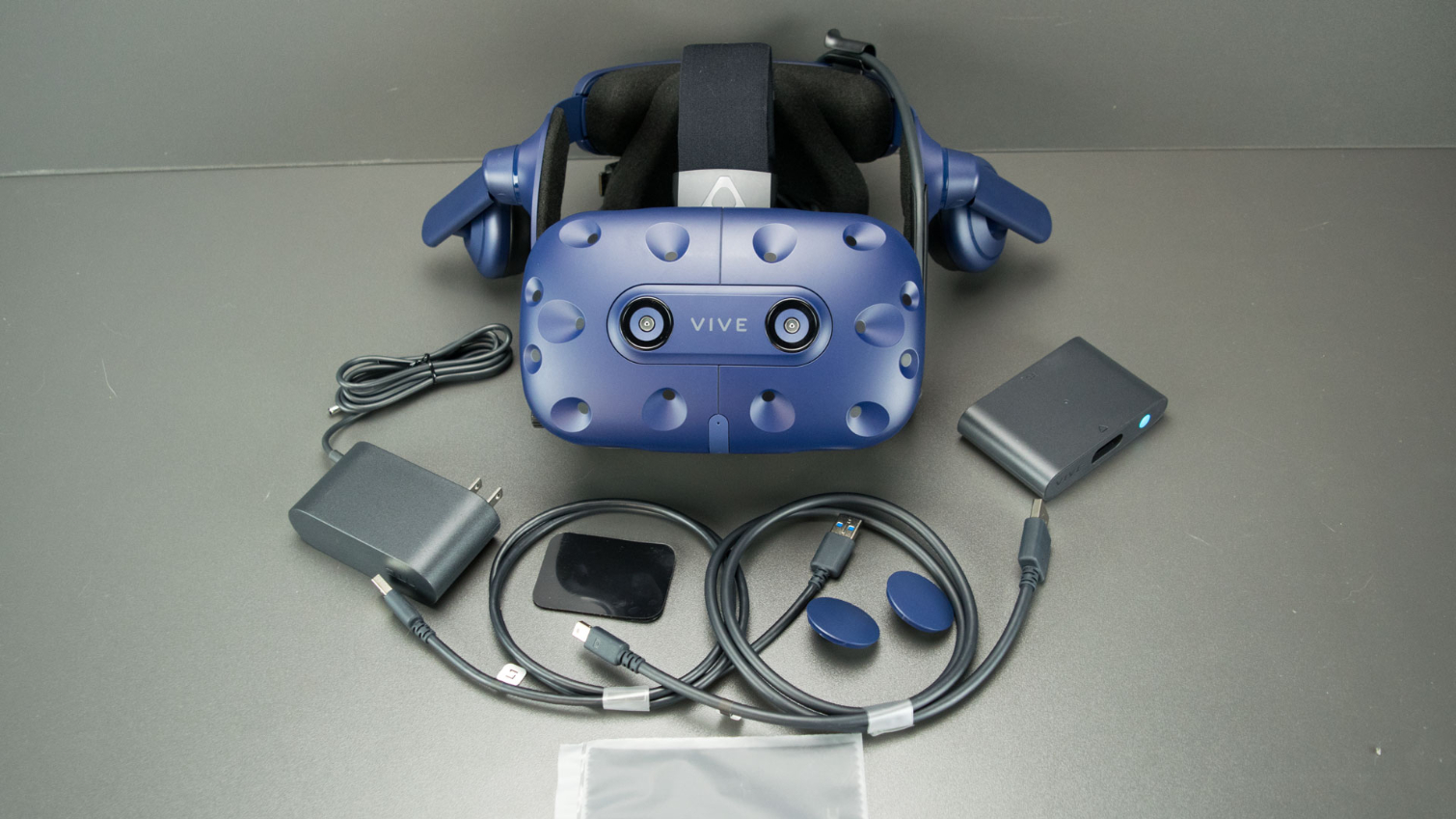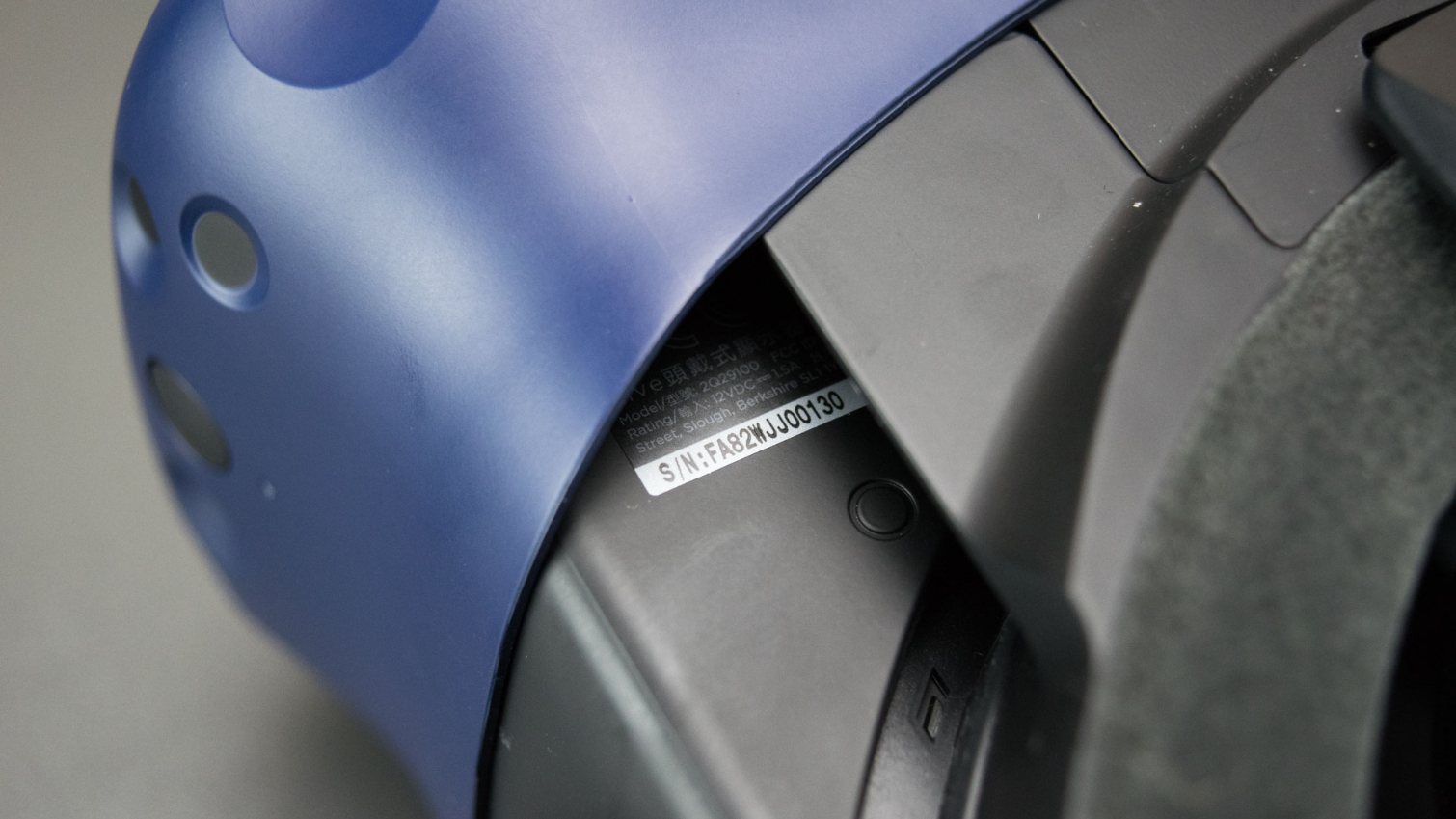HTC Vive Pro Headset Review: A High Bar for Premium VR
Why you can trust Tom's Hardware
Up Close With the HTC Vive Pro Headset
HTC would have you believe that the Vive Pro is for professionals, businesses, and enthusiasts. But one glance at the box, and it’s clear that the company is really trying to capture gamers. The Vive Pro’s box is decorated like a box for a console, with images of games that work with the headset. The box is approximately the size of a game console, too.
Inside the box, you’ll find the Vive Pro HMD, which ships in a form-fitted plastic insert to keep it secured and a plastic bag to keep dust out. The first thing we noticed about the headset is the dark blue plastic that it’s made of. The color of the device isn’t exactly important, but somehow the shade of blue that HTC used gives it a premium appearance to our eyes. The contrast between the blue and black just looks sharp.
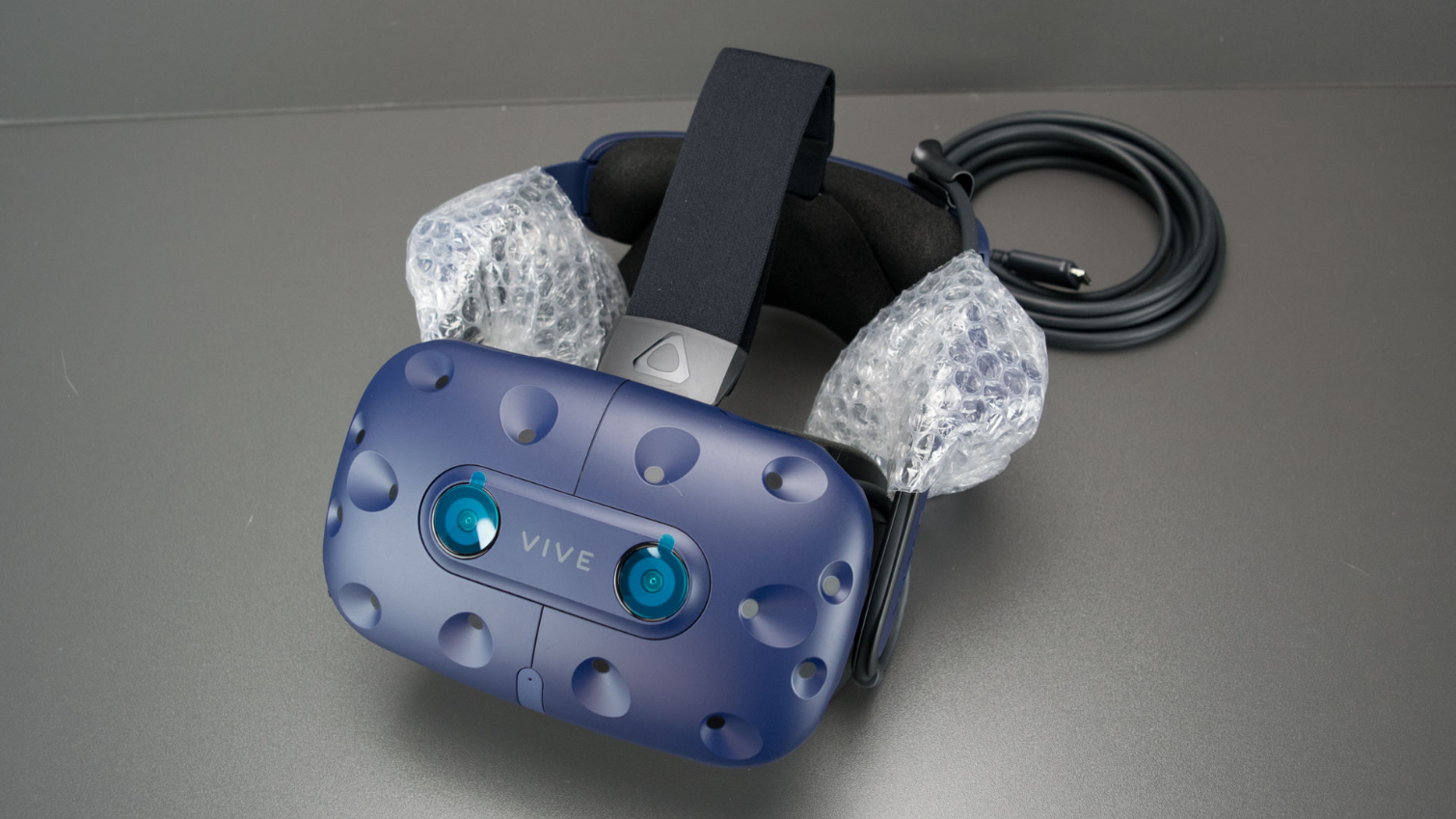
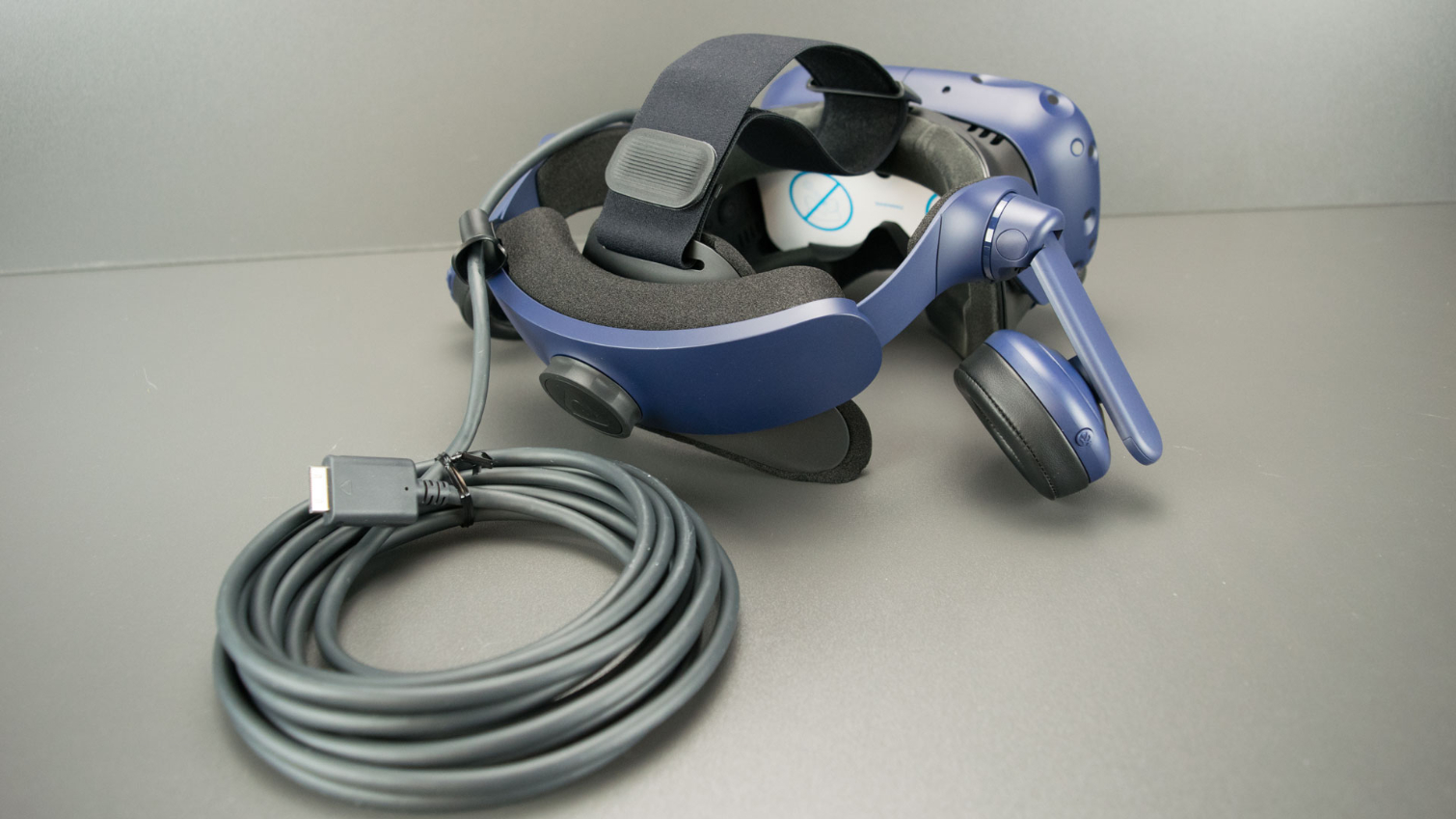
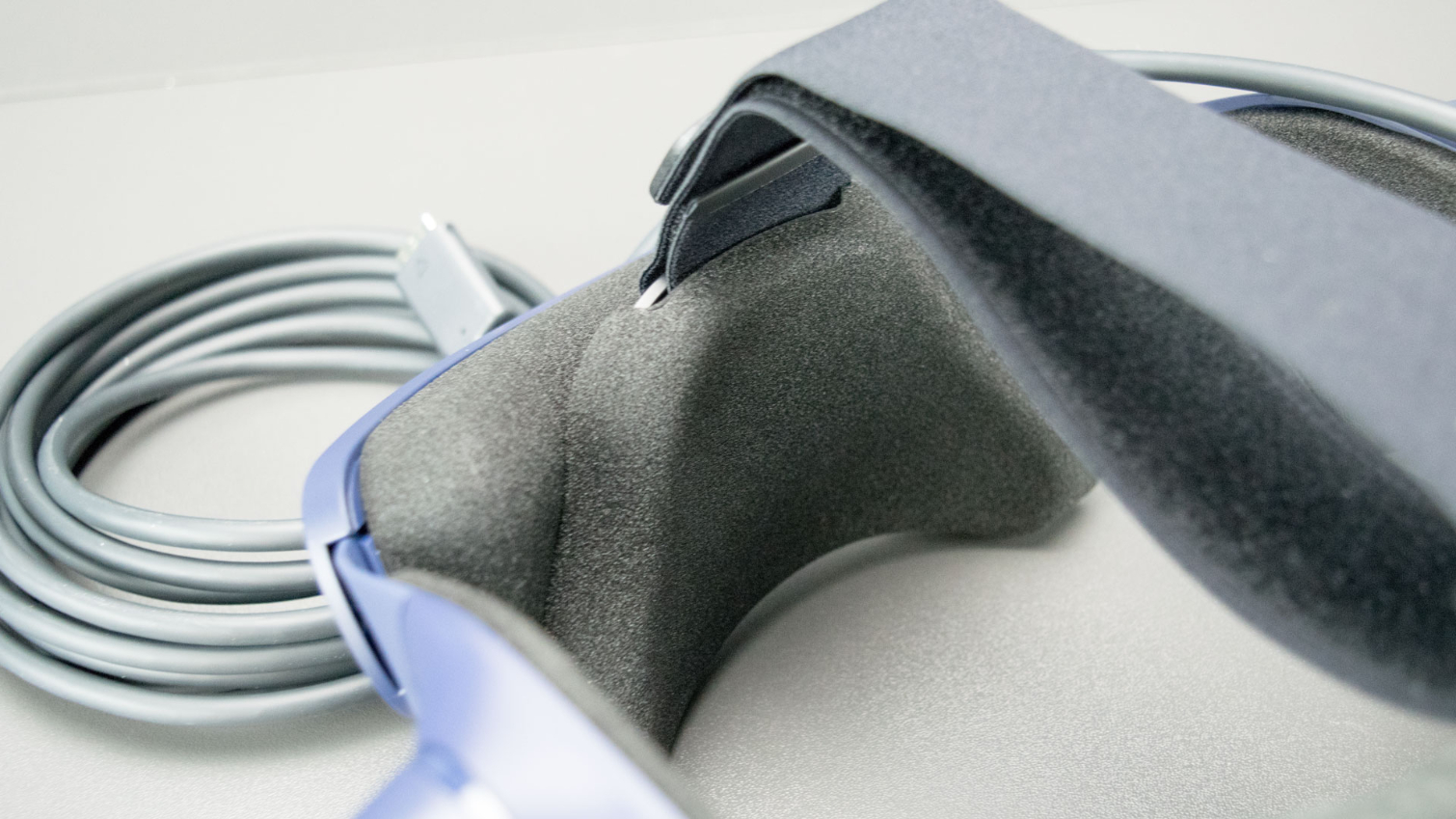
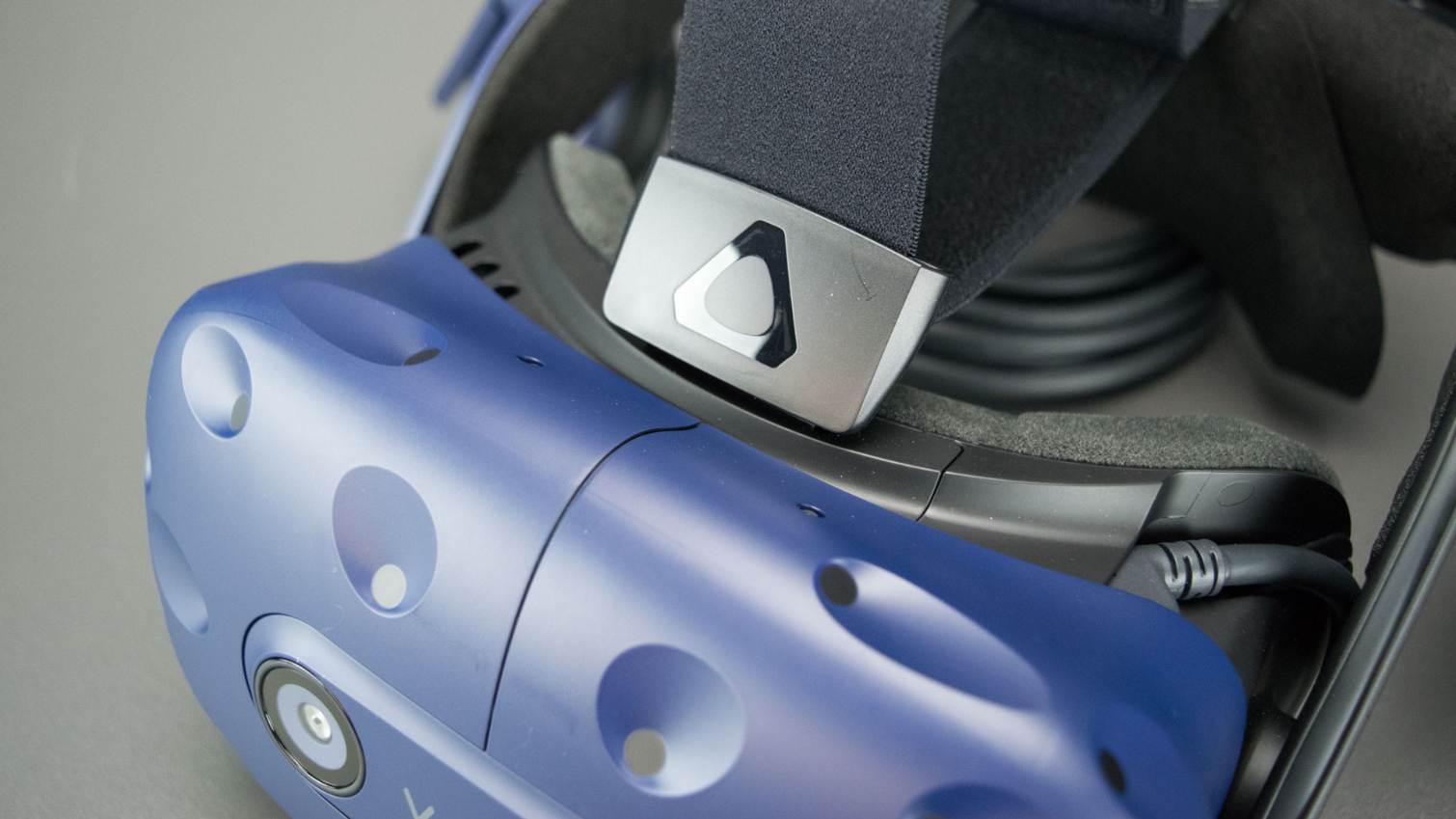
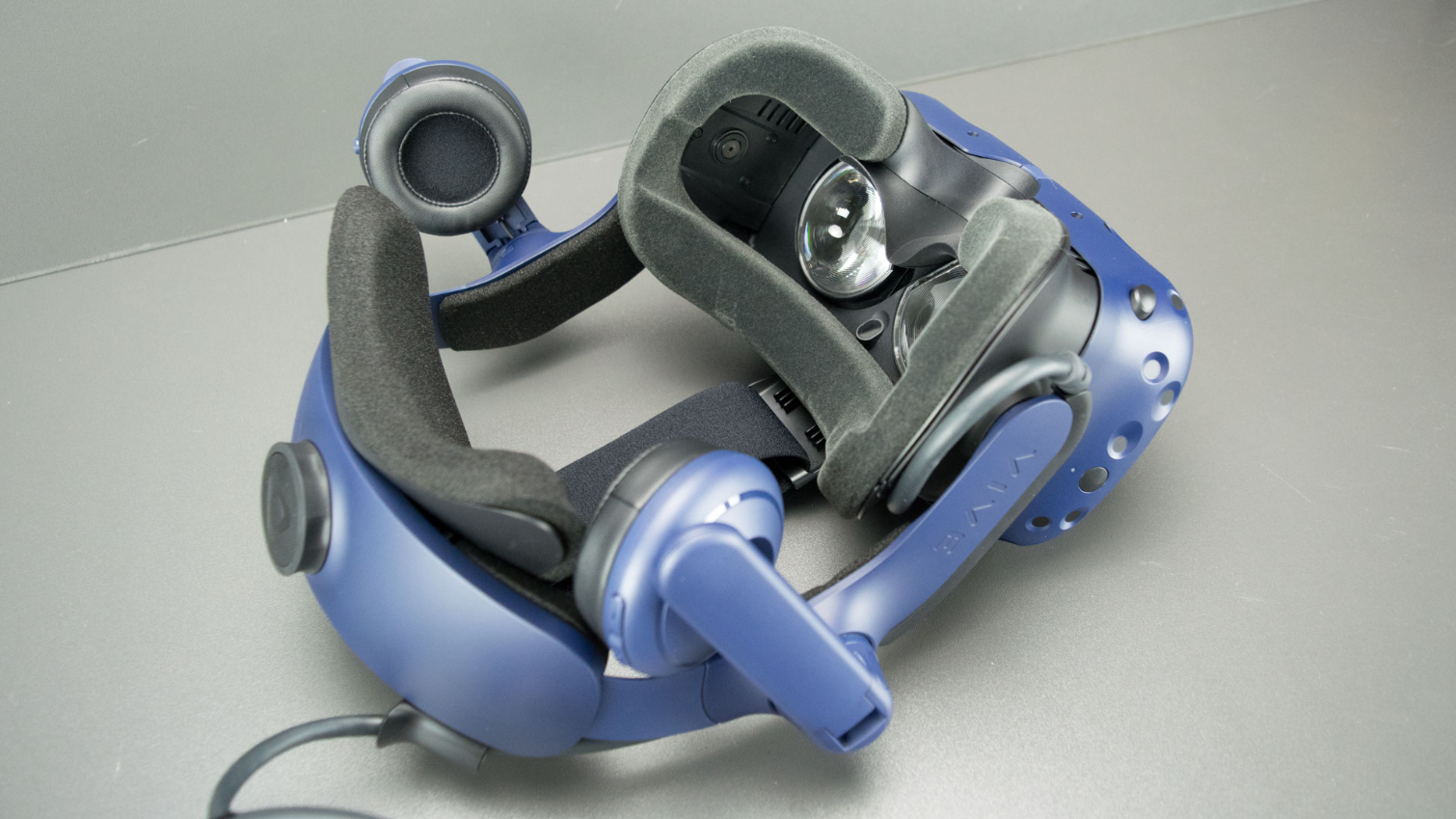
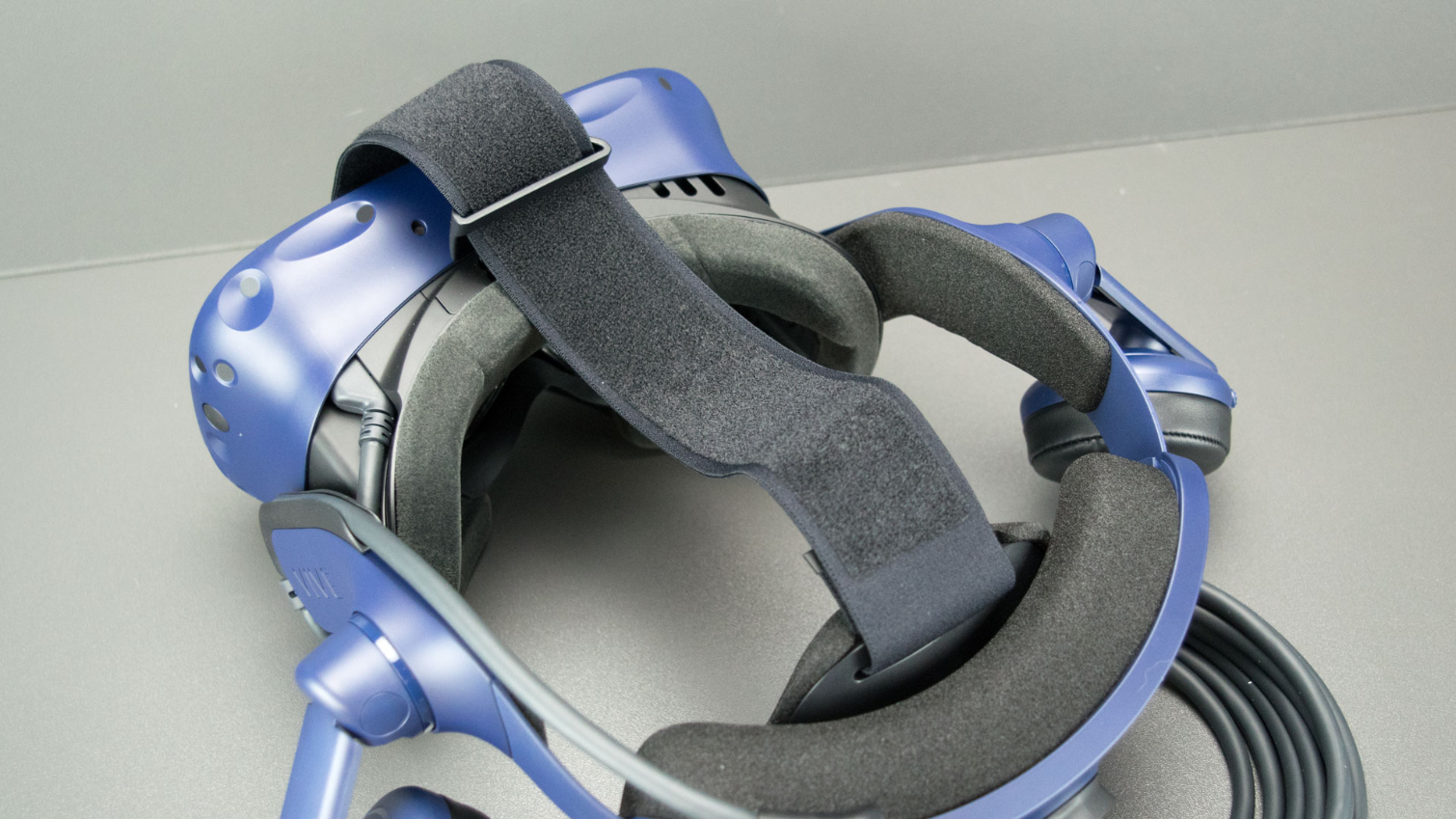
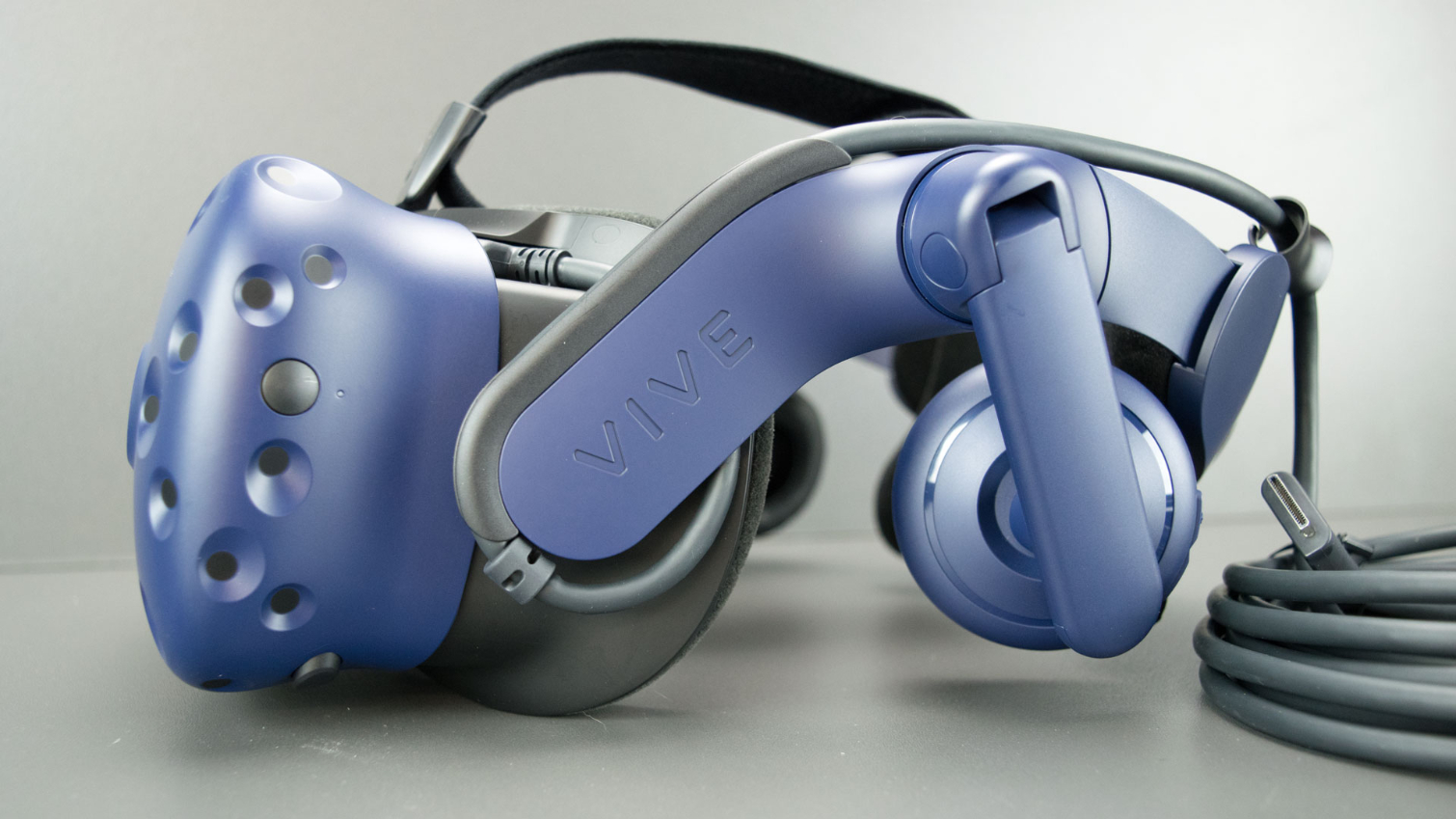
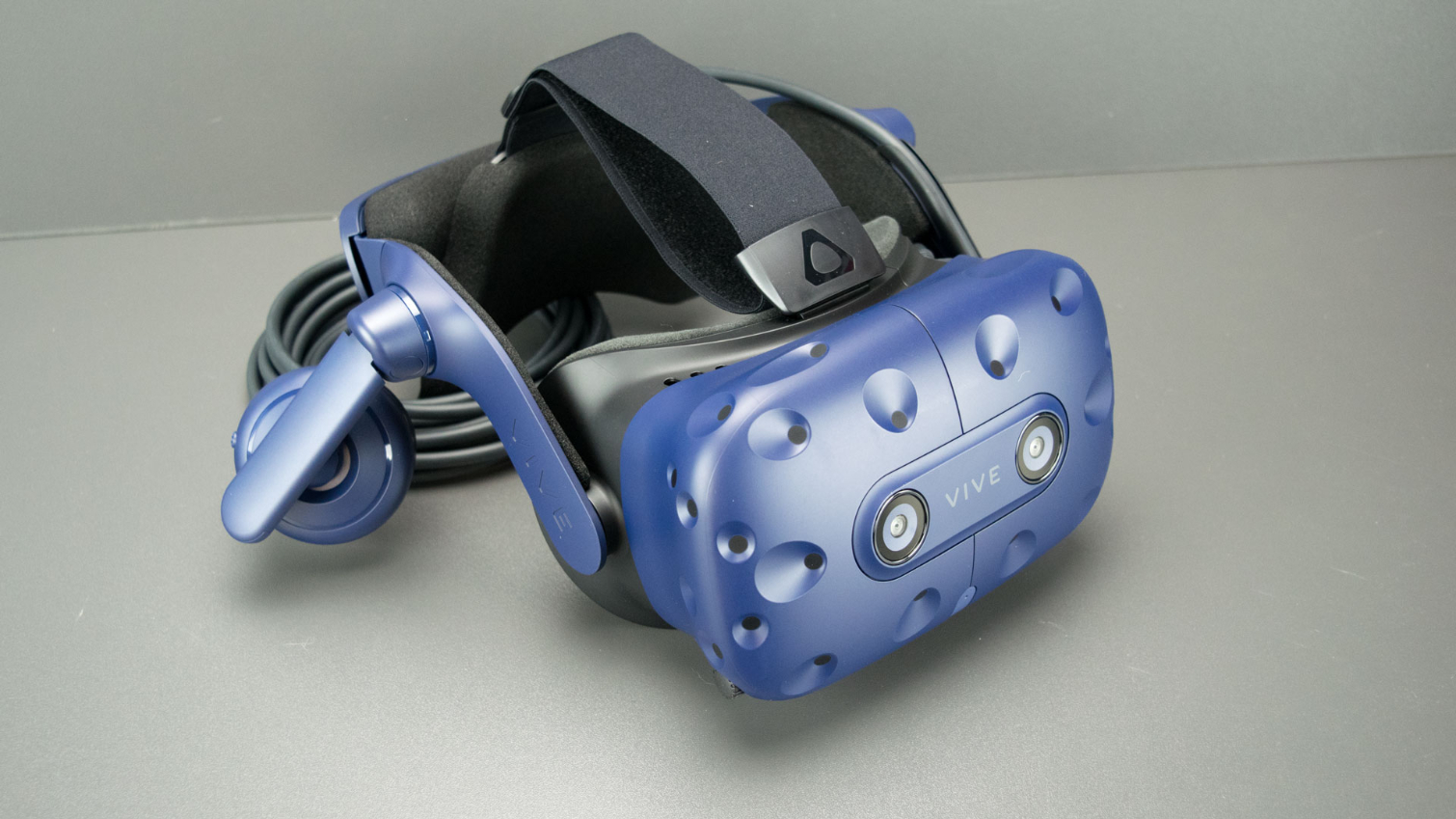
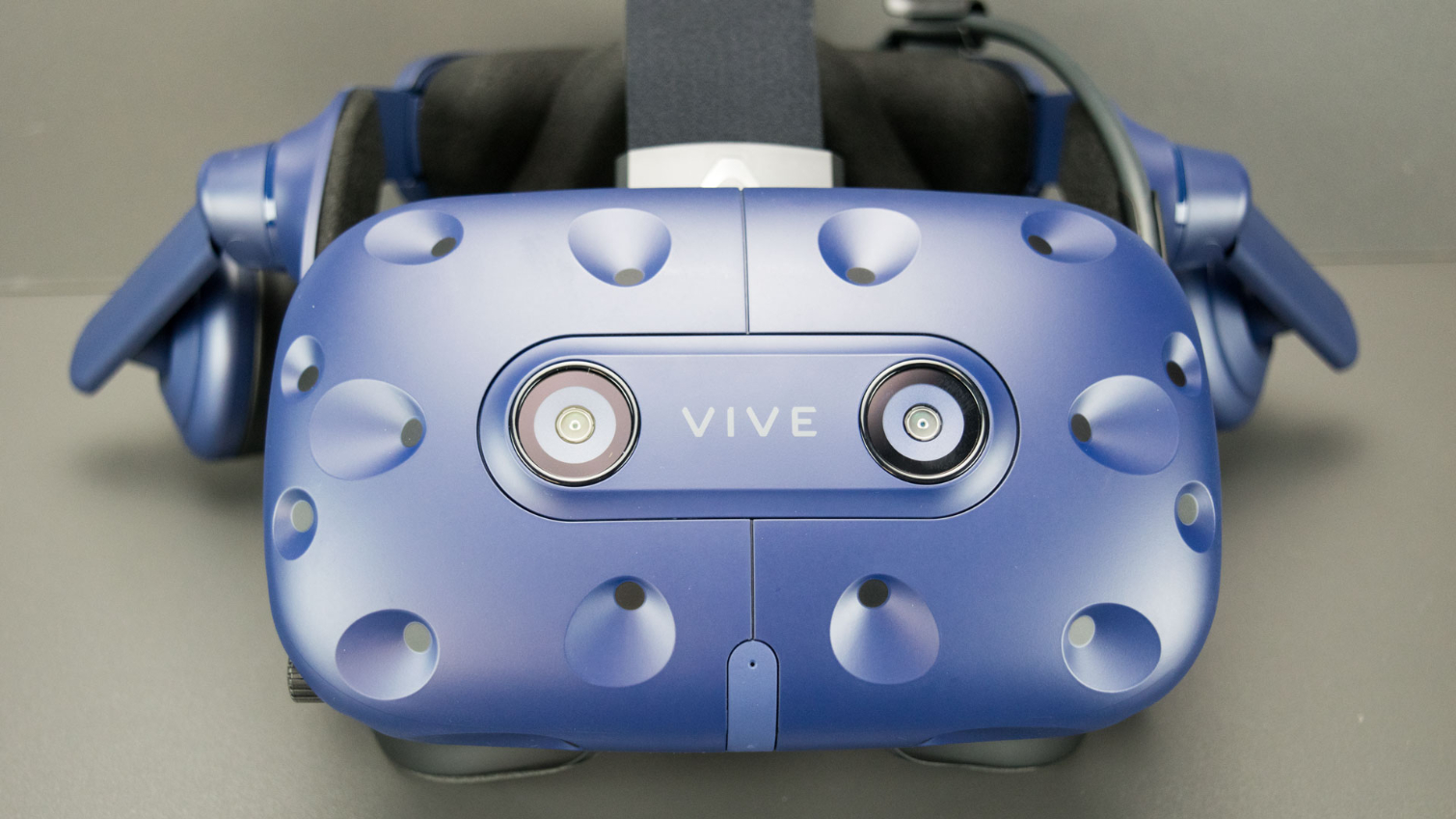
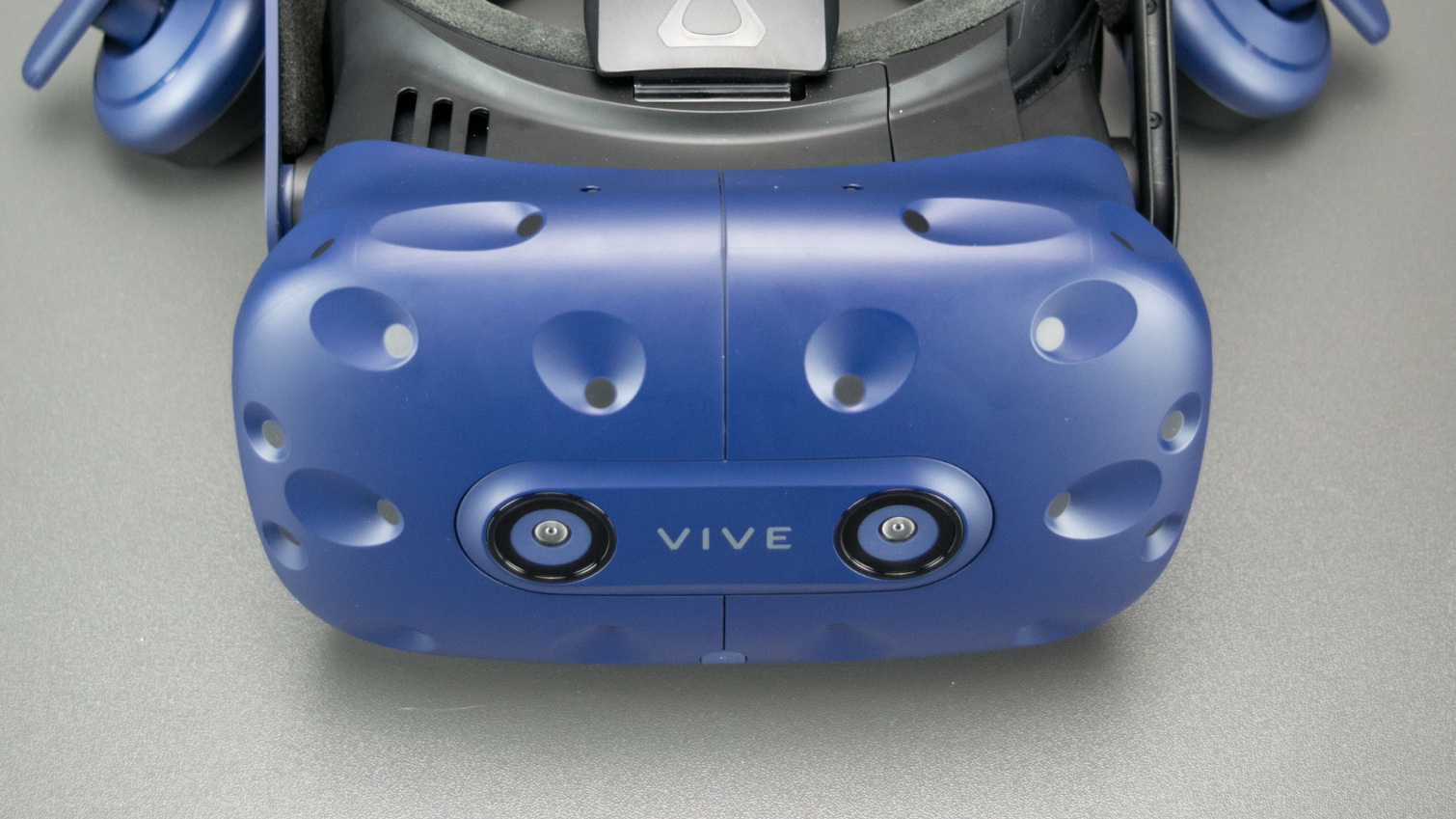
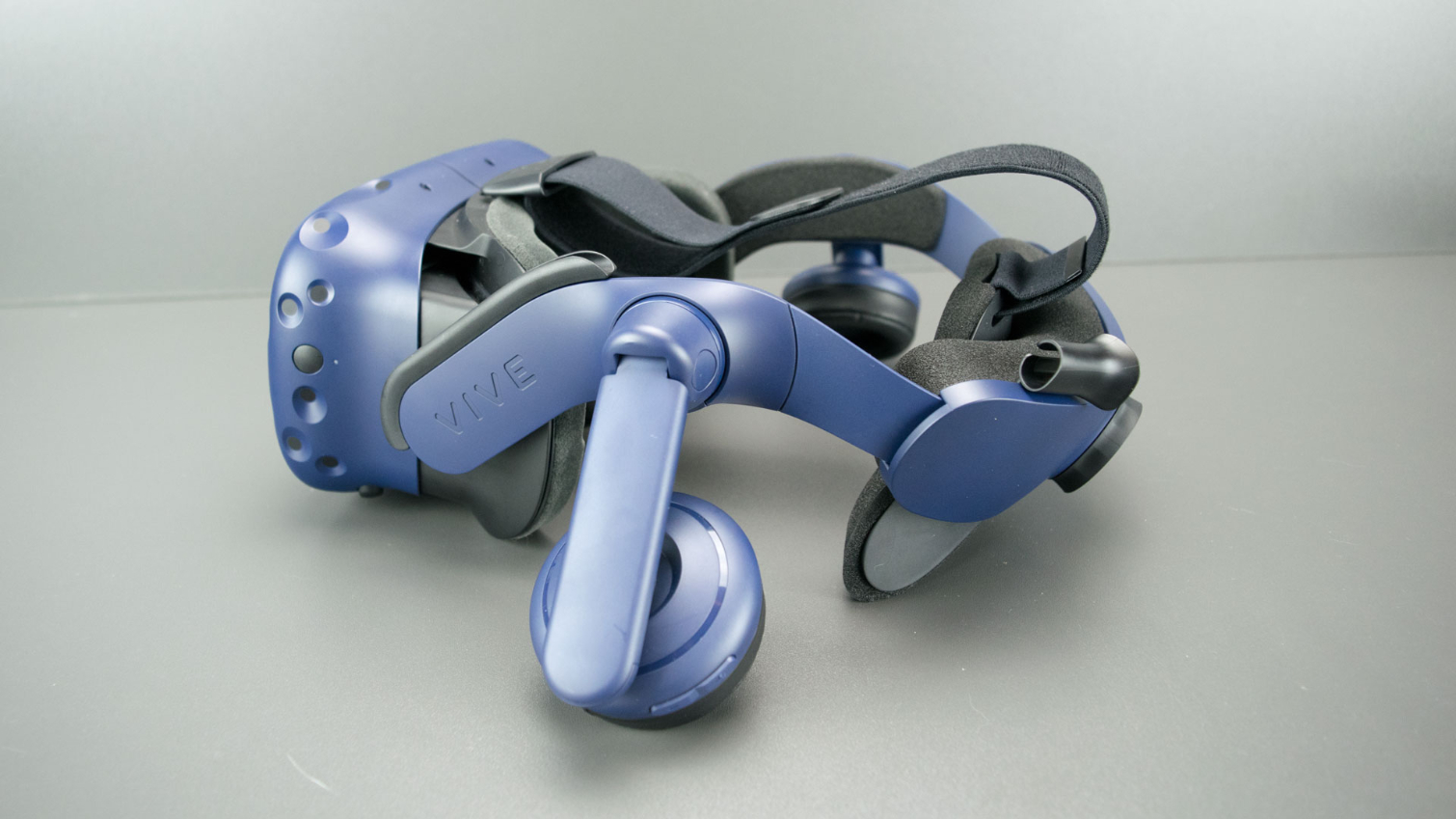
At first glance, the Vive Pro is largely the same shape as the original Vive, though the visor is a little less bulbous. The top is slightly less round, but it’s a subtle change that you would need an eye for detail to notice. The biggest change to the front of the headset is the Vive Pro’s inclusion of a pair of chaperone cameras front and center. HTC also reworked the sensor placements, though it didn’t add additional sensors to the headset.
The Vive Pro features a rigid head strap, which is becoming a major trend with VR HMDs. The Windows Mixed Reality headsets all offer rigid straps with mechanical adjustments, as does Sony’s PlayStation VR. Even the Oculus Rift offers a semi-rigid head-strap design. HTC’s new design is quite different from other head straps that we’ve encountered, though. The head band has a curvature that wraps up and over your ears, and back down toward the lower backside of your head.
The new headset also has a fabric overhead strap with Velcro for adjustments, like the original Vive. HTC chose a nicer material for the strap this time and added a plastic tab, which makes gripping the end easier. The overhead strap weaves through a hinge on the front, which is attached to the body of the HMD, not the moveable front cover like on the HTC Vive.

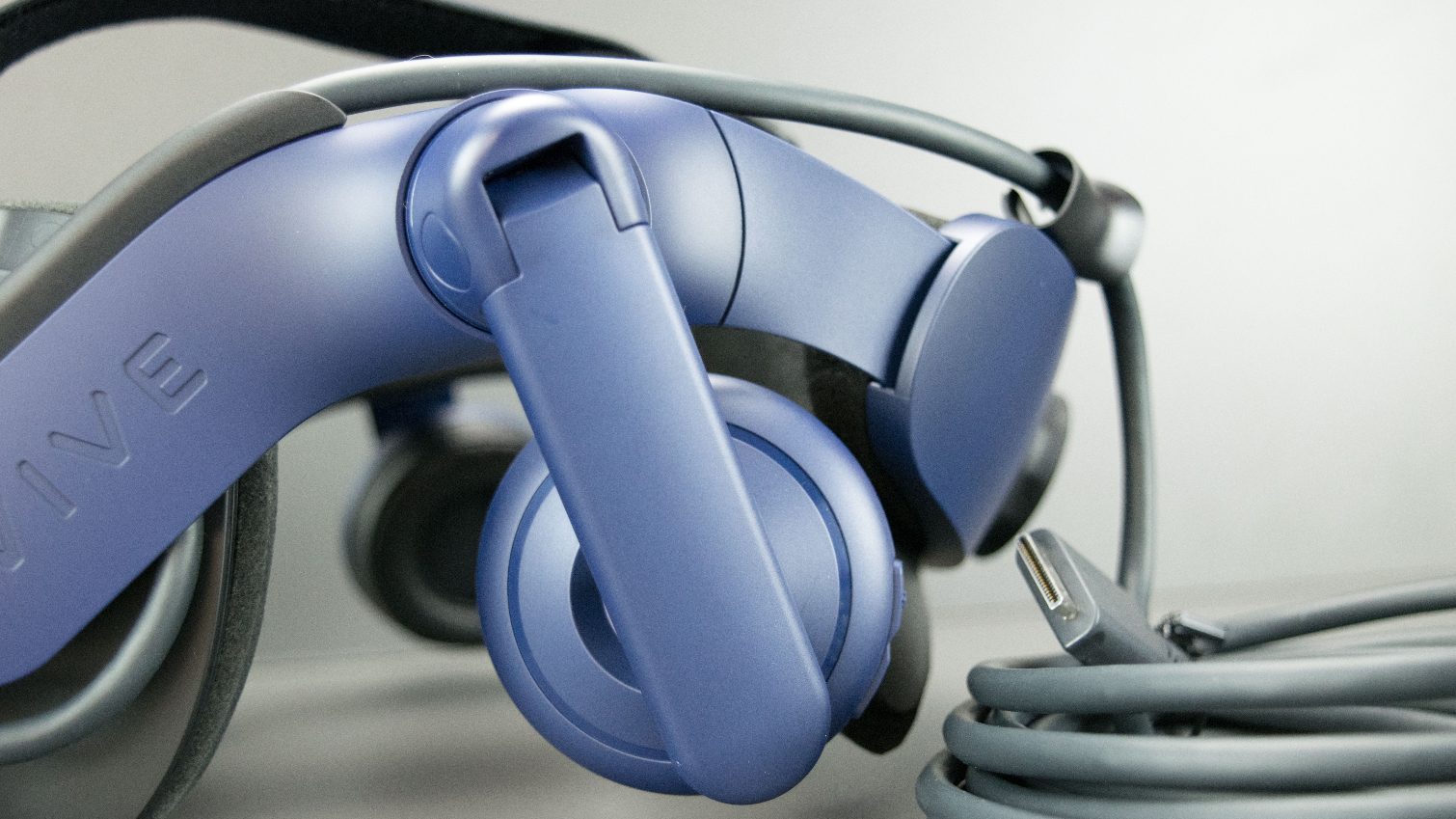
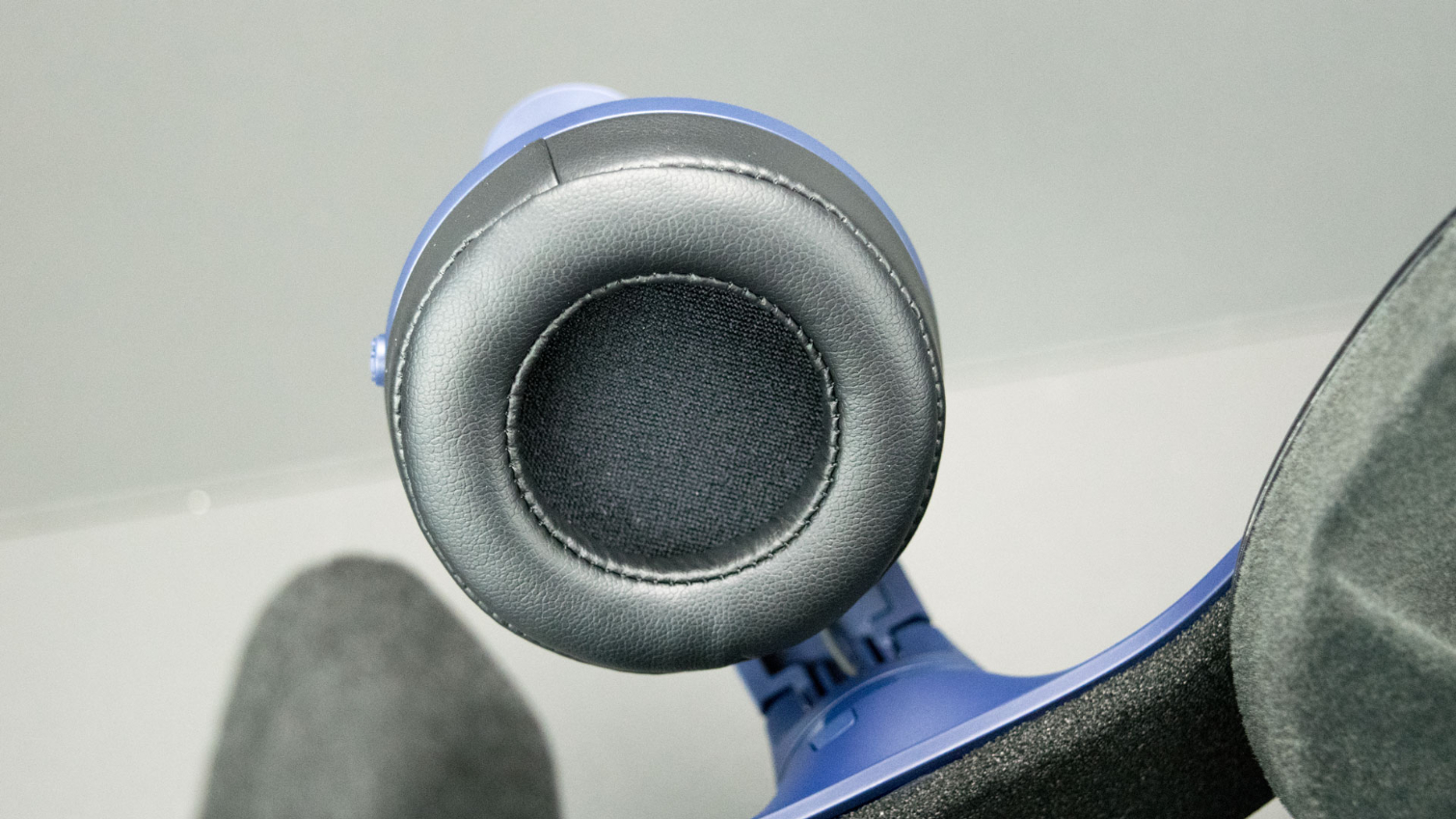
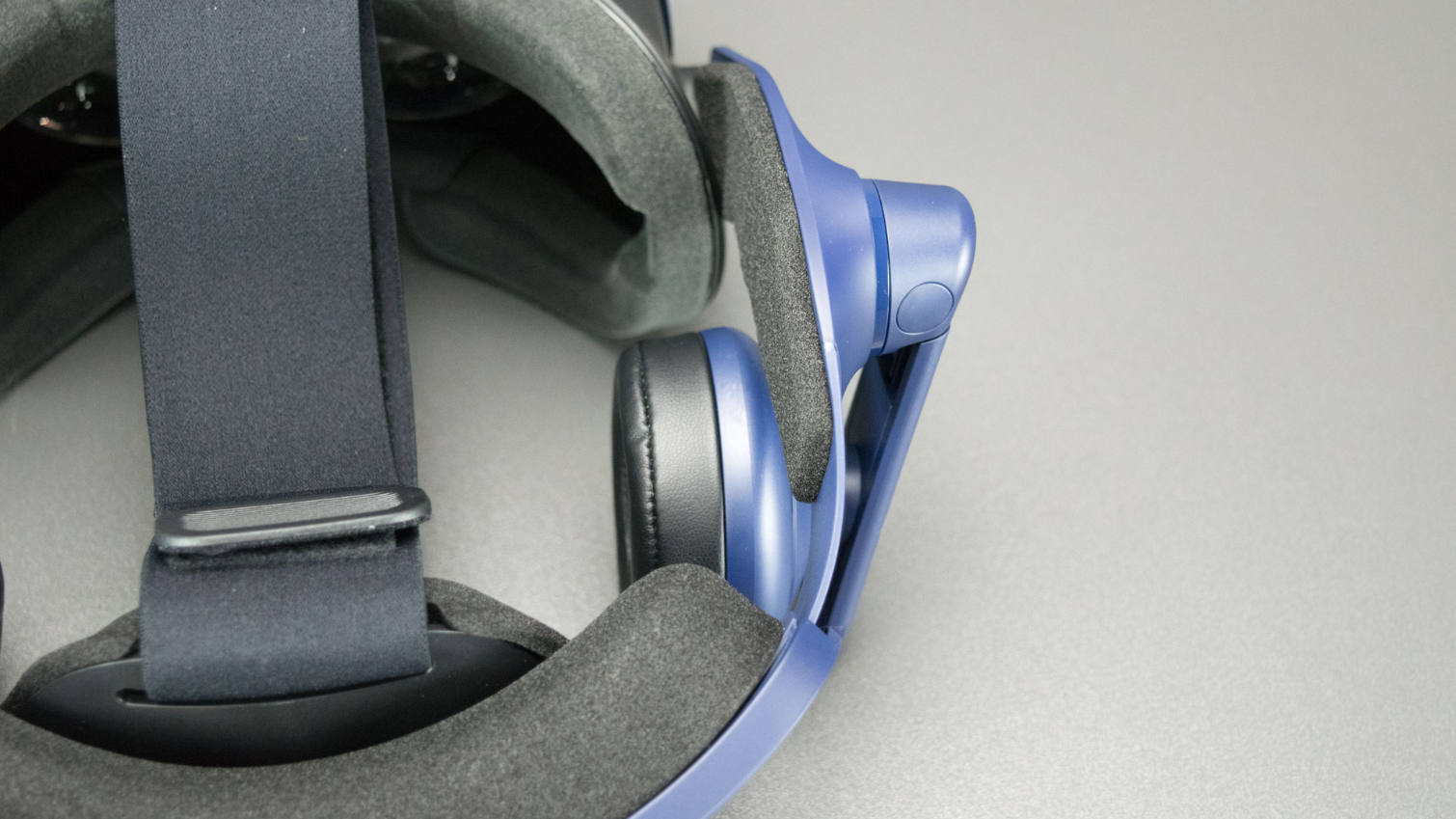
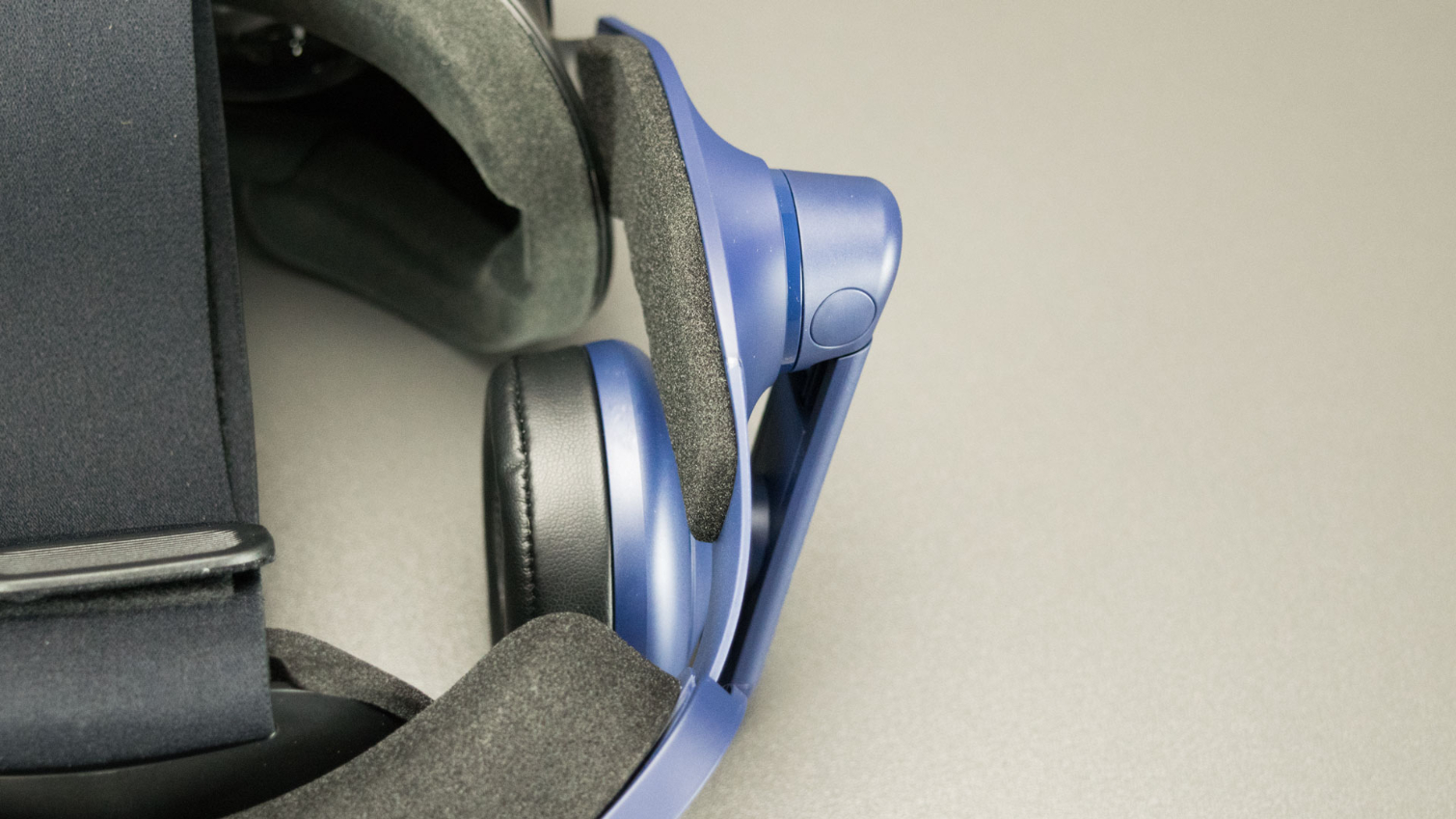
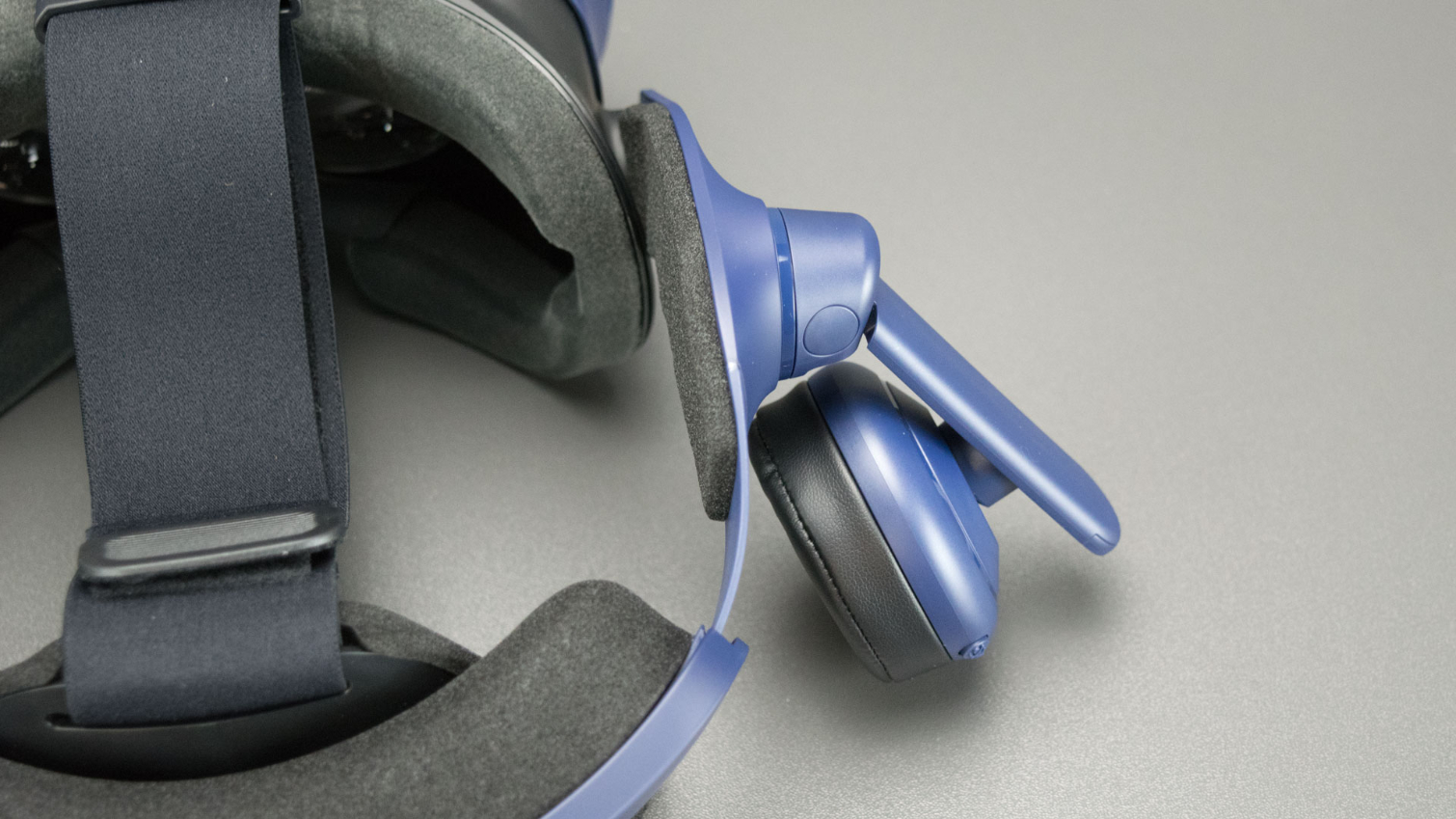
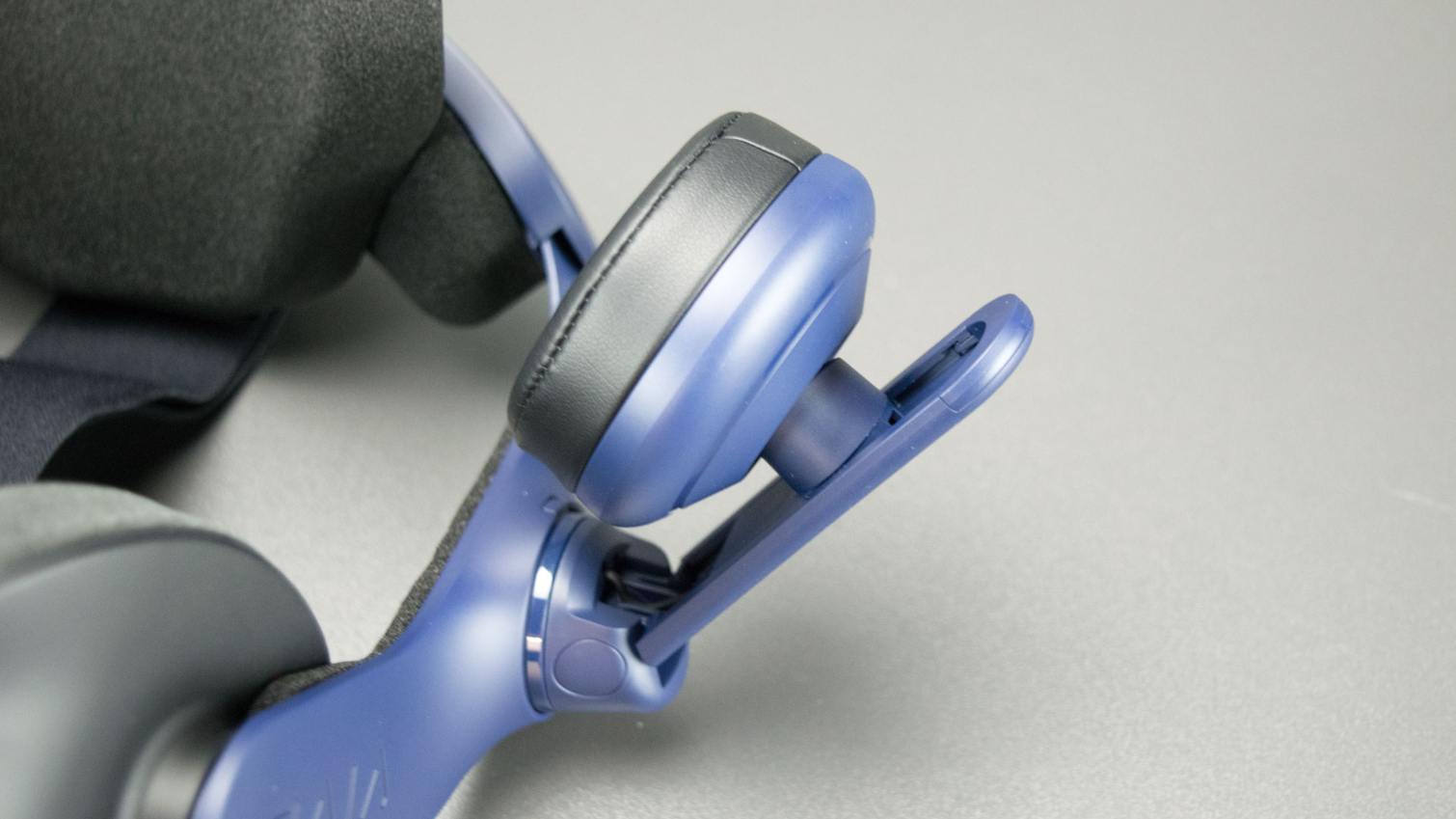

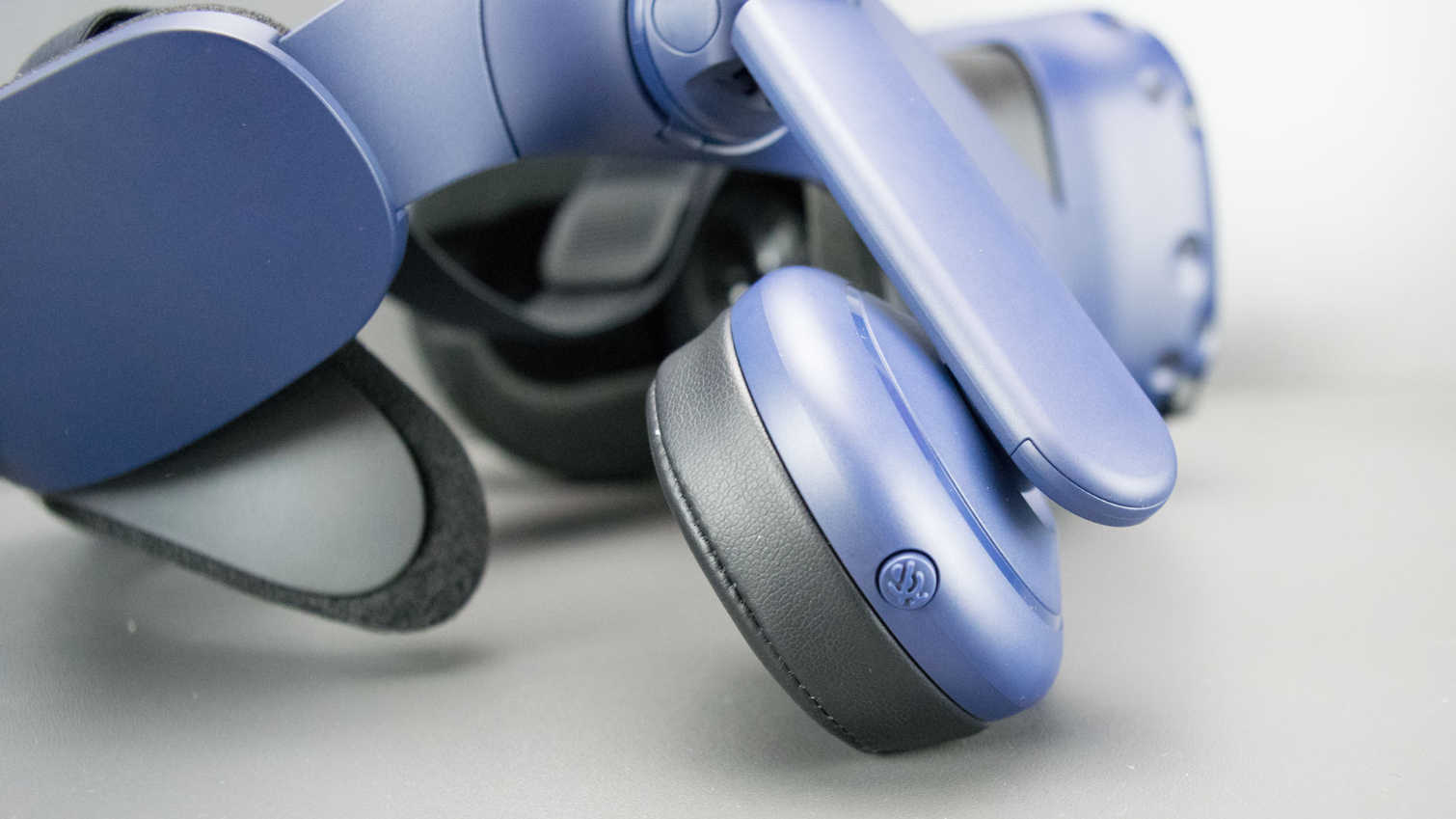
The Vive Pro includes a pair of 2.5” headphones, which are attached to arms that articulate in several directions. You can move the earpieces forward, back, up, and down, as well as pivot them to ensure the cans line up to your ears. The arms also flip outward, so you can pull the speakers away from your ears to hear the real world. The headphones feature leather-wrapped padding that is moisture-proof but not removable. The left headphone includes volume-adjustment buttons, and the right headphone includes a mute button, which cuts off the Vive Pro’s dual array microphones.
The Vive Pro headset also includes a new Link Box, which features a power button to turn the HMD off when not in use, and a proprietary plug for the headset's cable. The Link Box still requires a power source, a USB source, and a video source, but HTC updated the interfaces for the Vive Pro. The original Vive supports HDMI, mini-DisplayPort, and USB 2.0, while the new Link Box features mini-DisplayPort, but no HDMI. The new unit also requires a USB 3.0 or 3.1 Type-A USB port.
Get Tom's Hardware's best news and in-depth reviews, straight to your inbox.
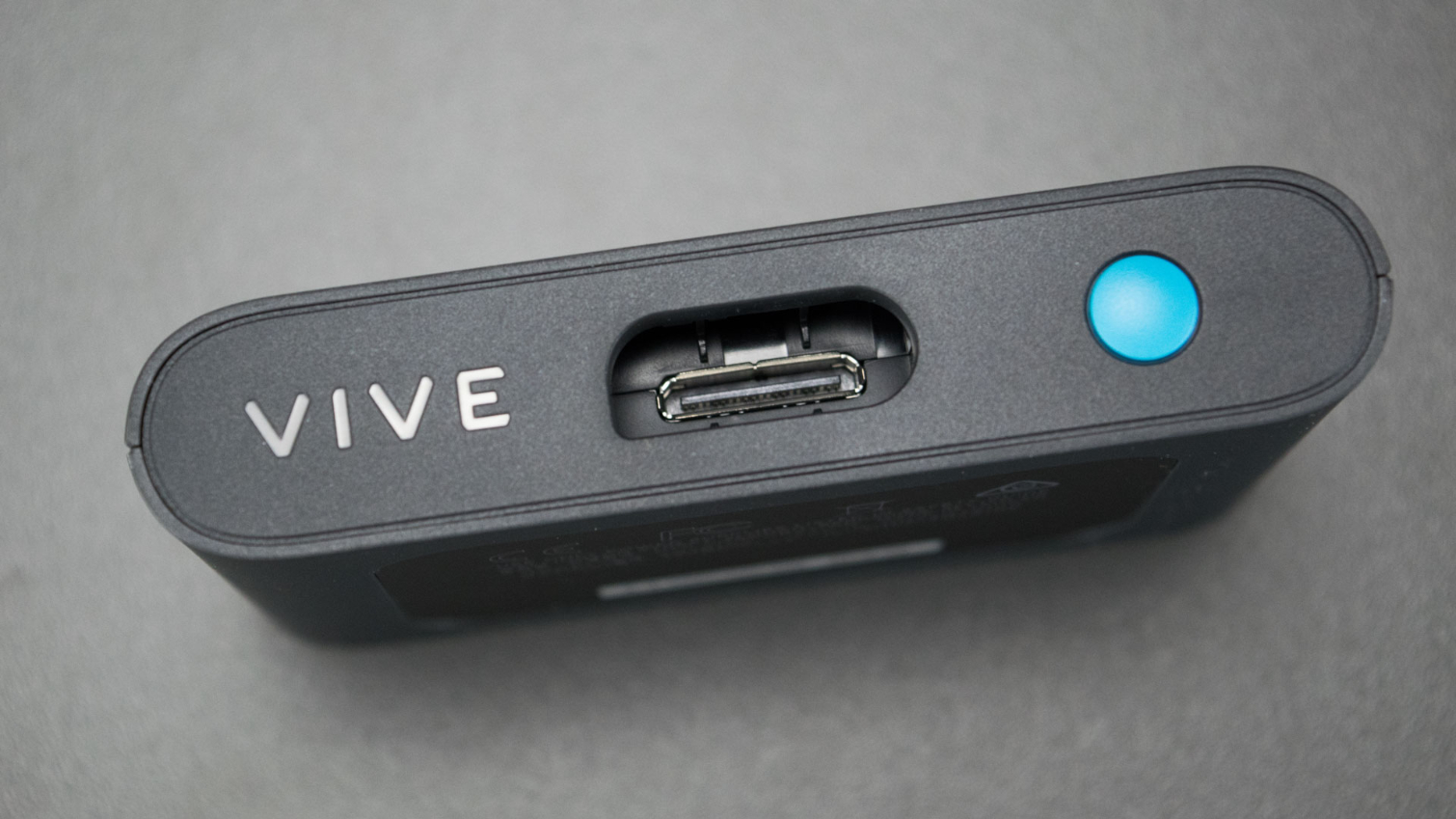
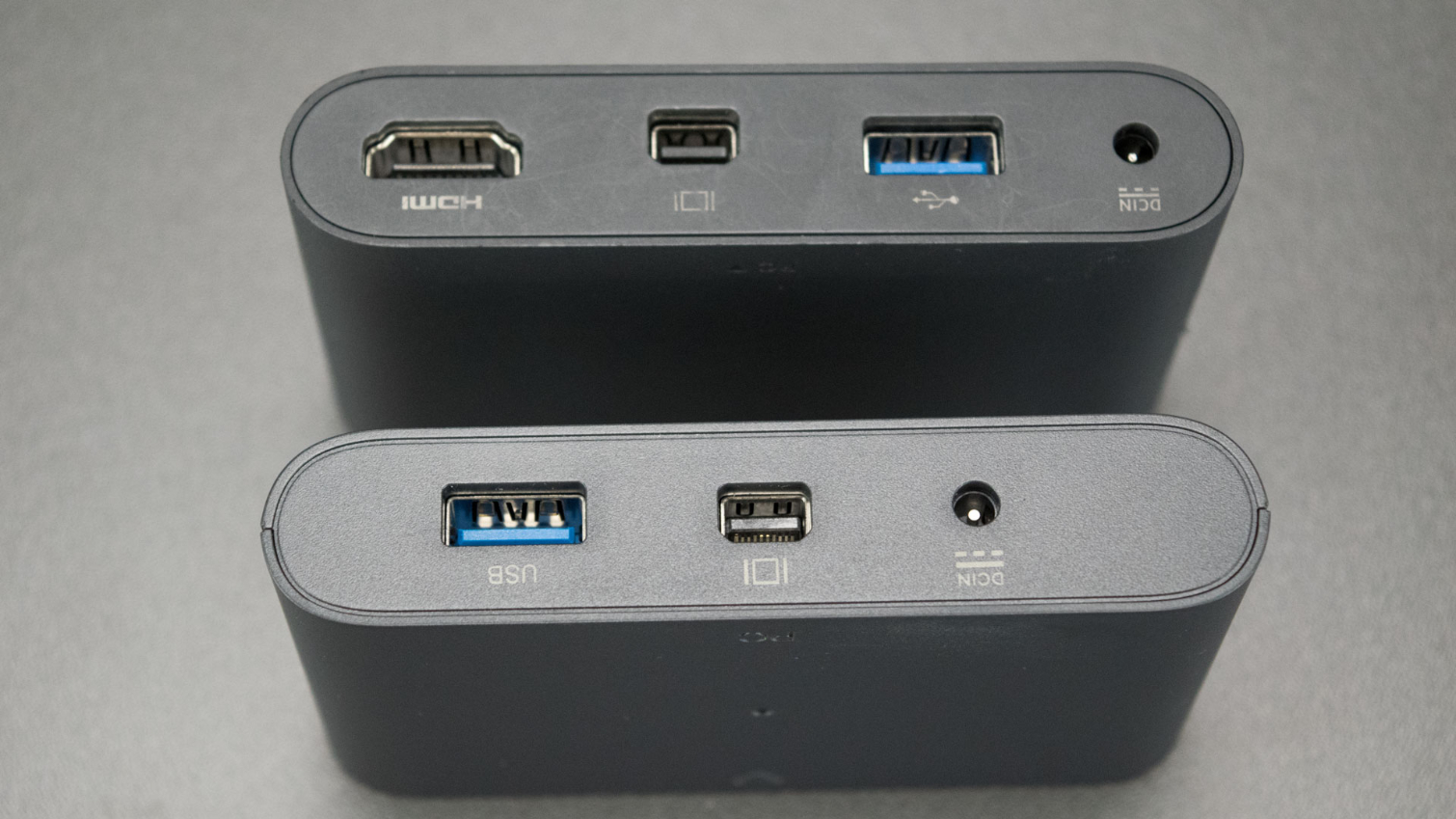

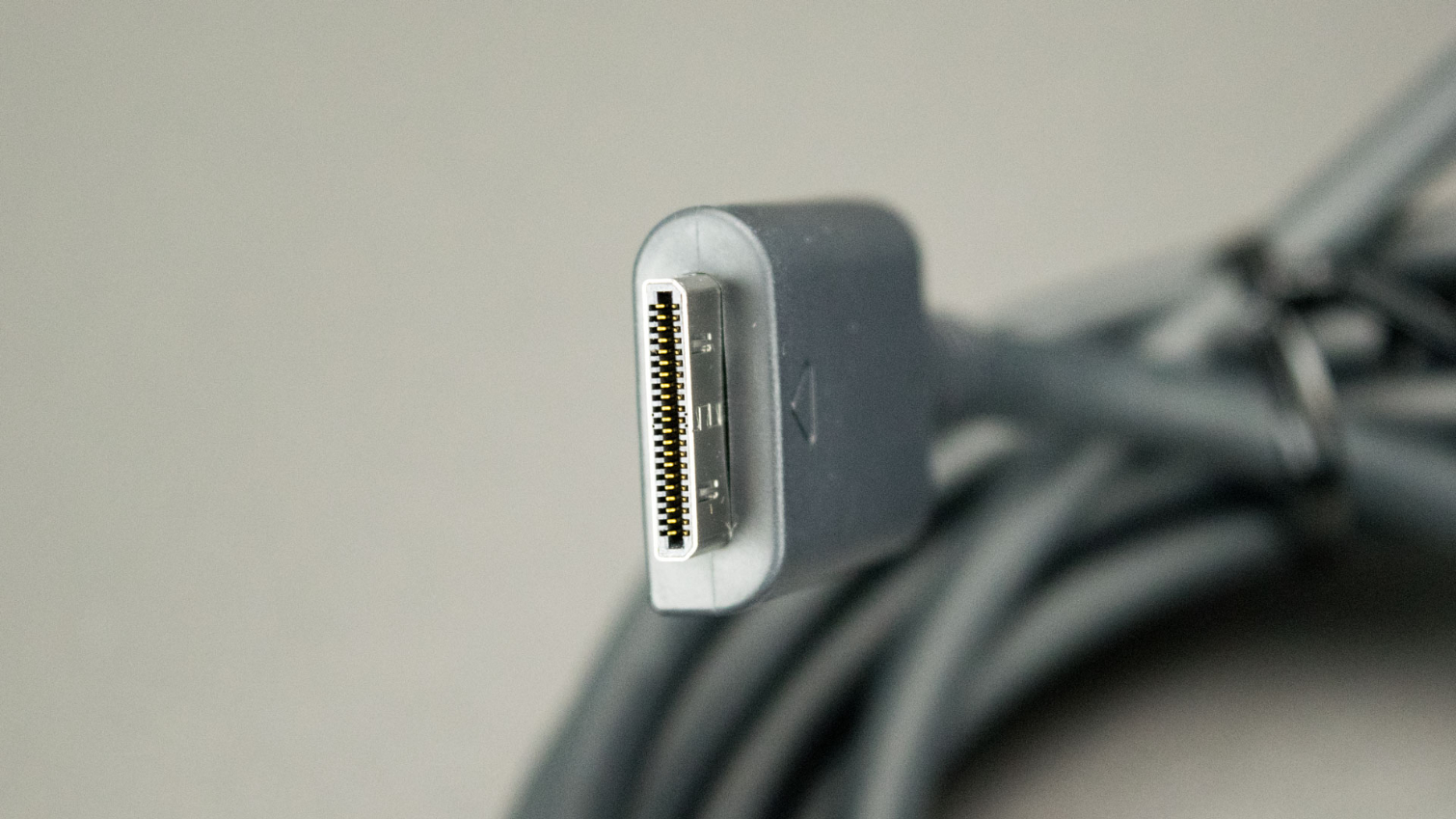
Clever Cable Management
The Vive Pro’s tether cable connects to the left side of the HMD and wraps around the head-strap hinge, which prevents kinks in the cable when rotating the visor swivel. The cable runs through a channel along the head strap, and through a small horn-shaped loop that gently directs the cord toward the center of your back.
To remove the cable, you should adjust the lens relief to its maximum distance. Otherwise, you’ll have trouble with the cable head clearing the tight space. We managed to get ours out, but we found it impossible to put it back in without adjusting the relief. With the cable out of the headset port, unwind it from the hinge and remove it from the channel that holds it in place. The bell-shaped loop has a cut in it that allows you to pull the cable out without running the full length through the loop.

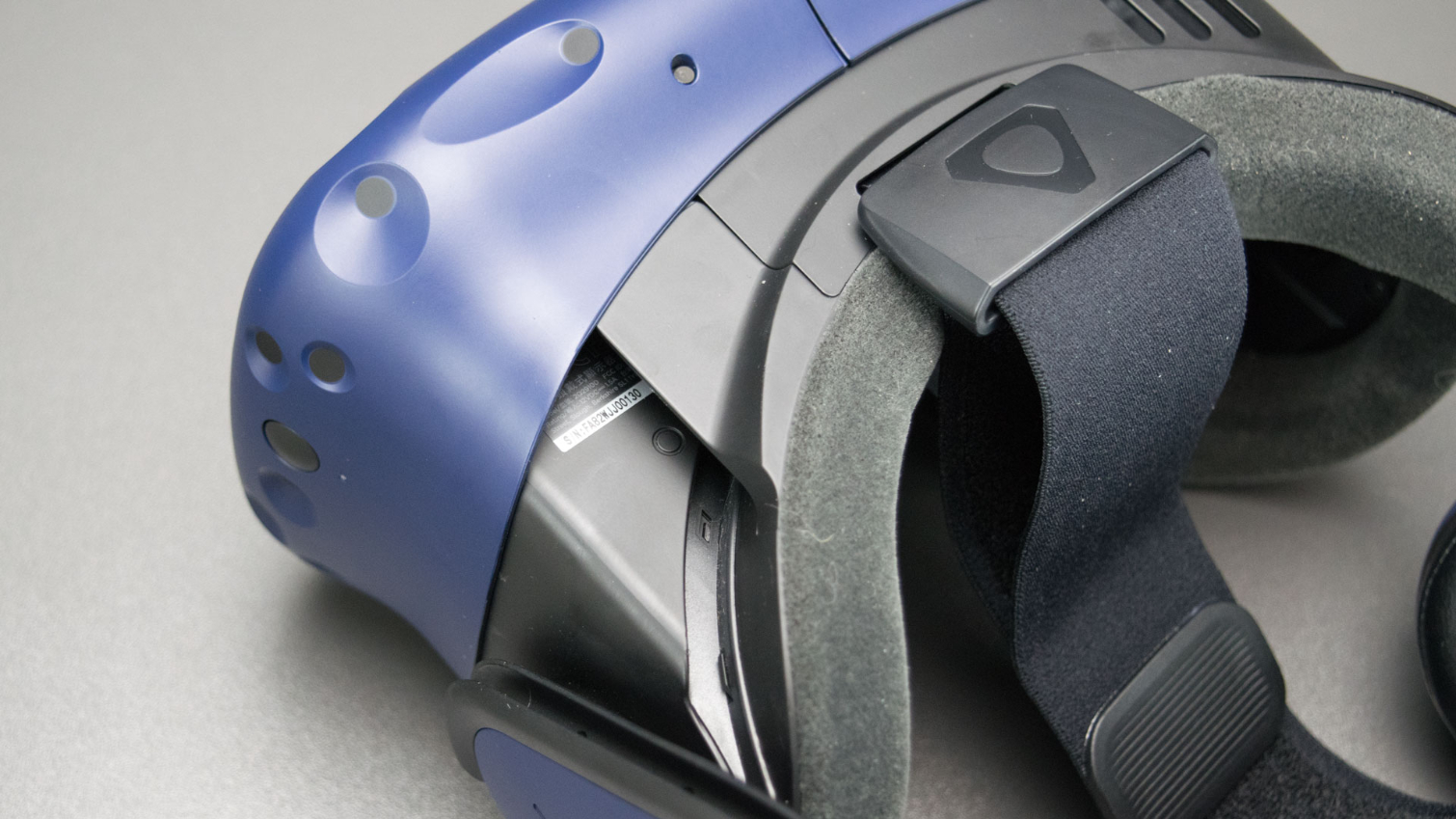
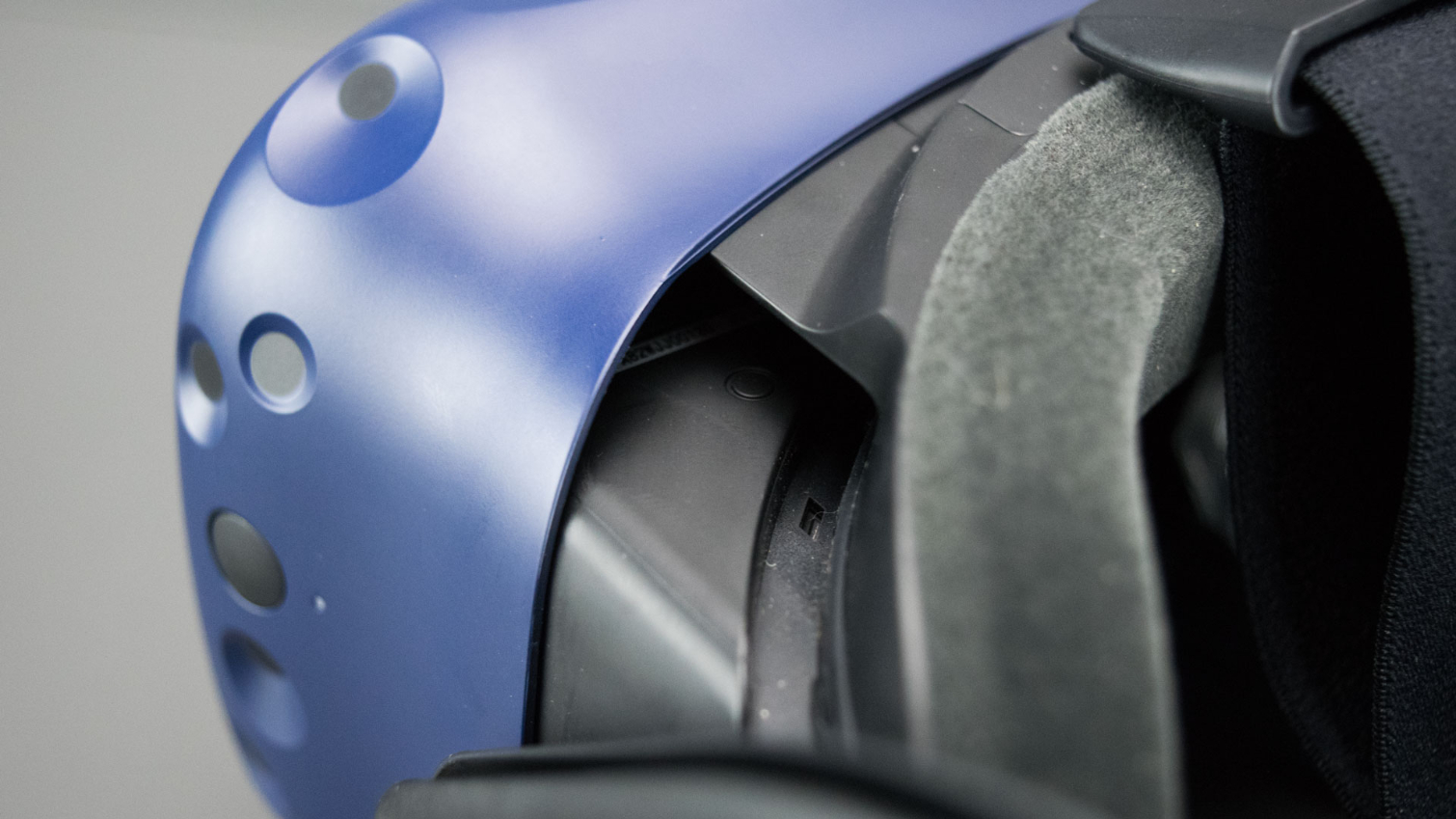
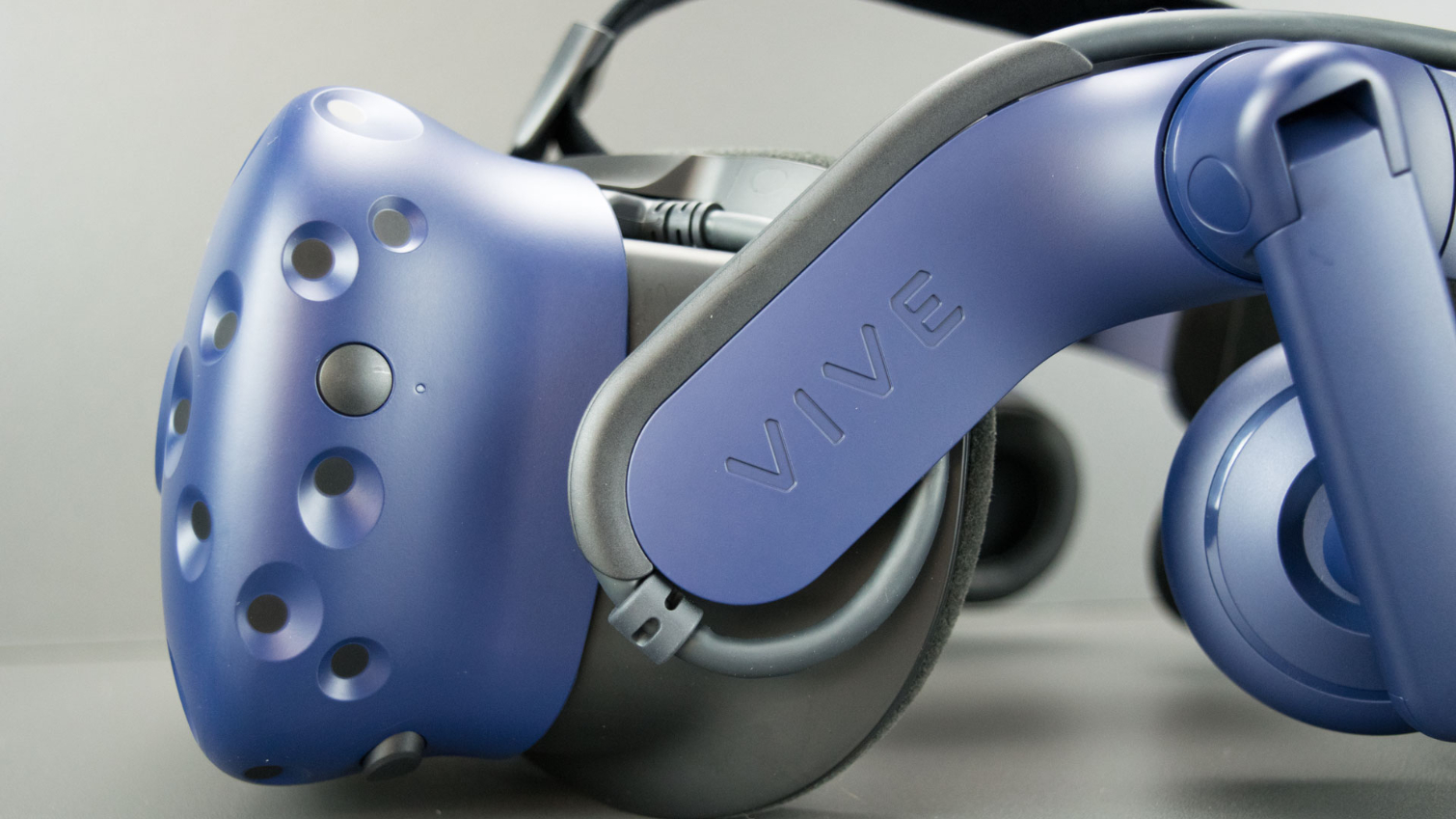
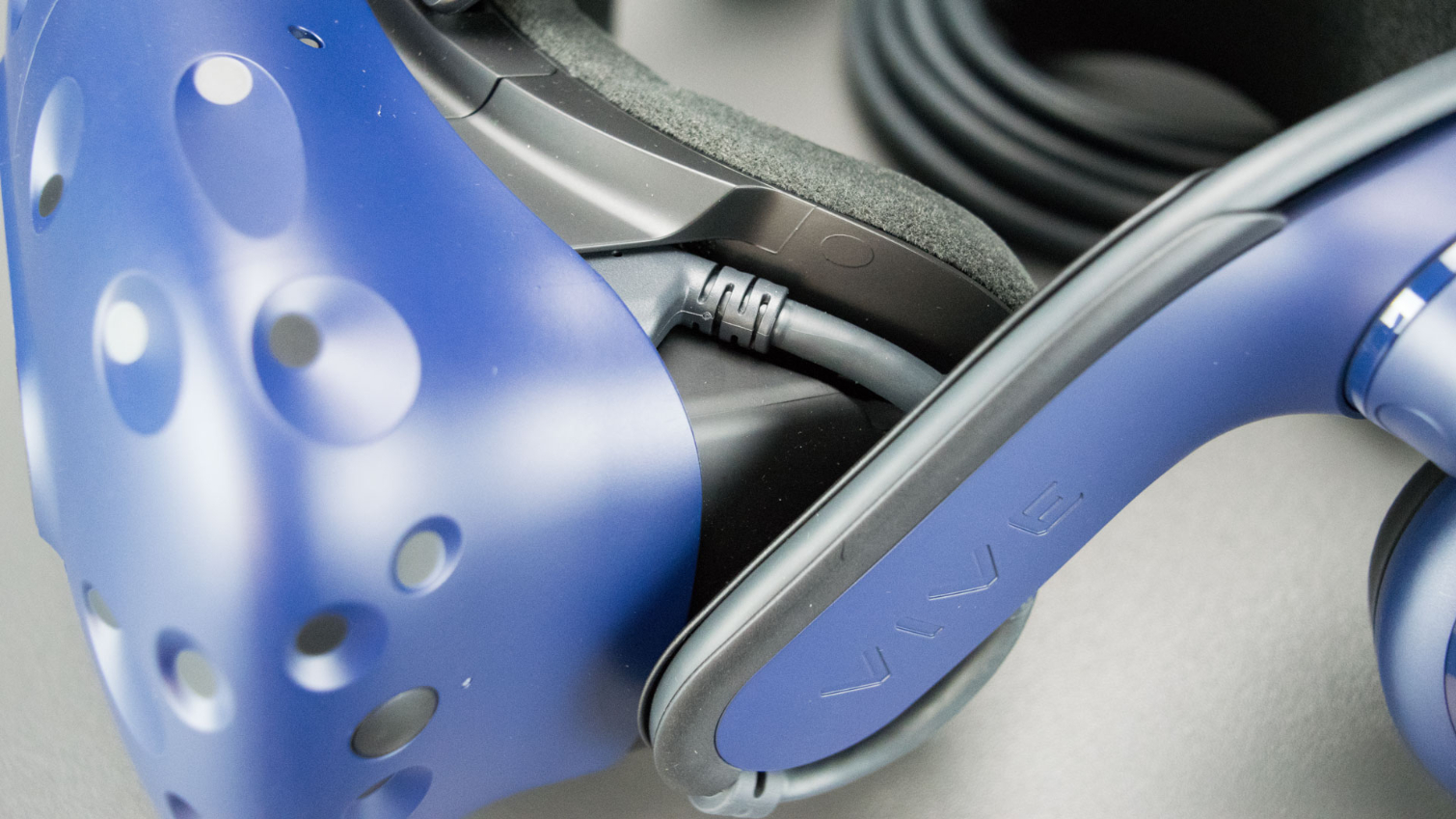

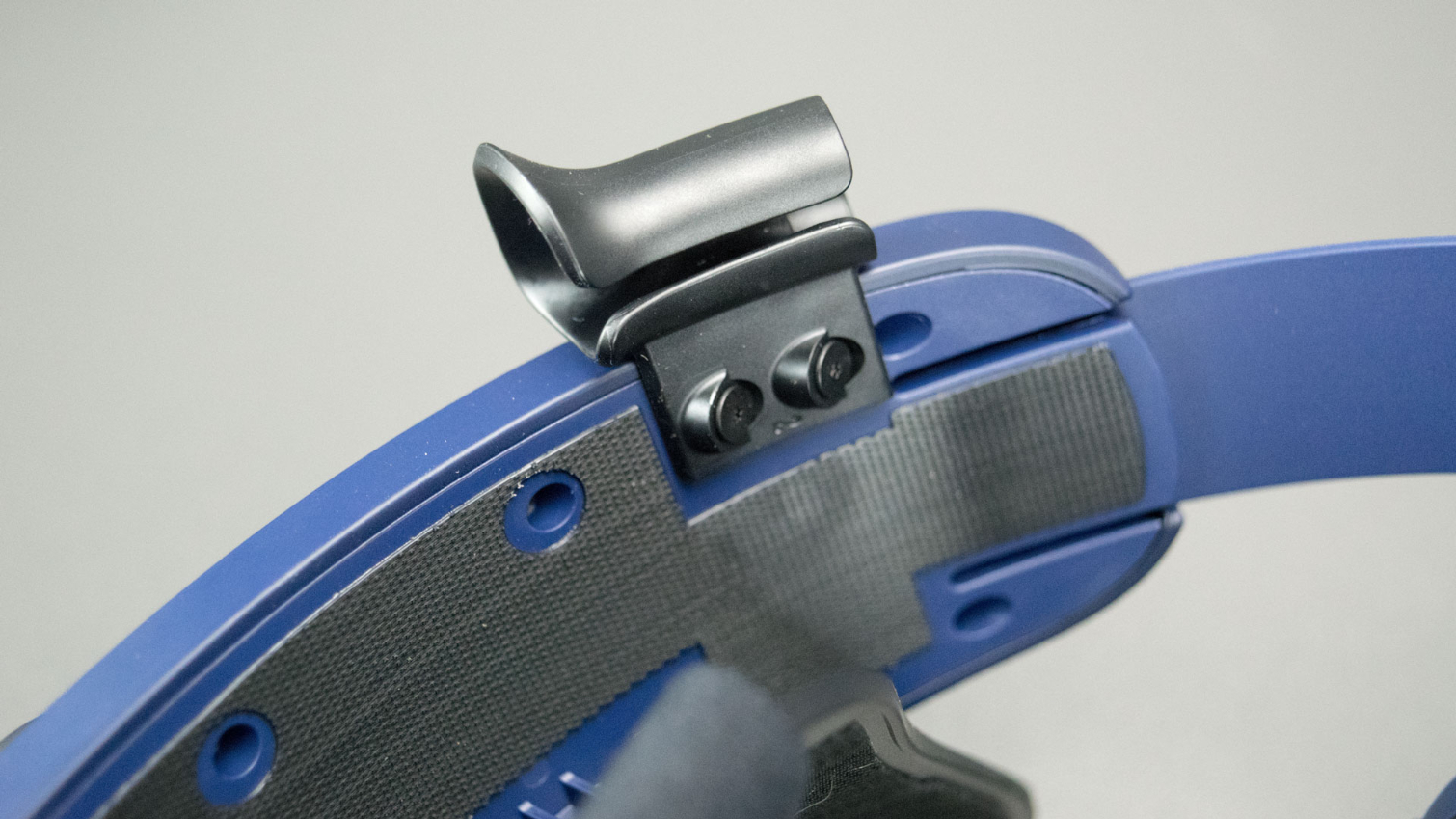
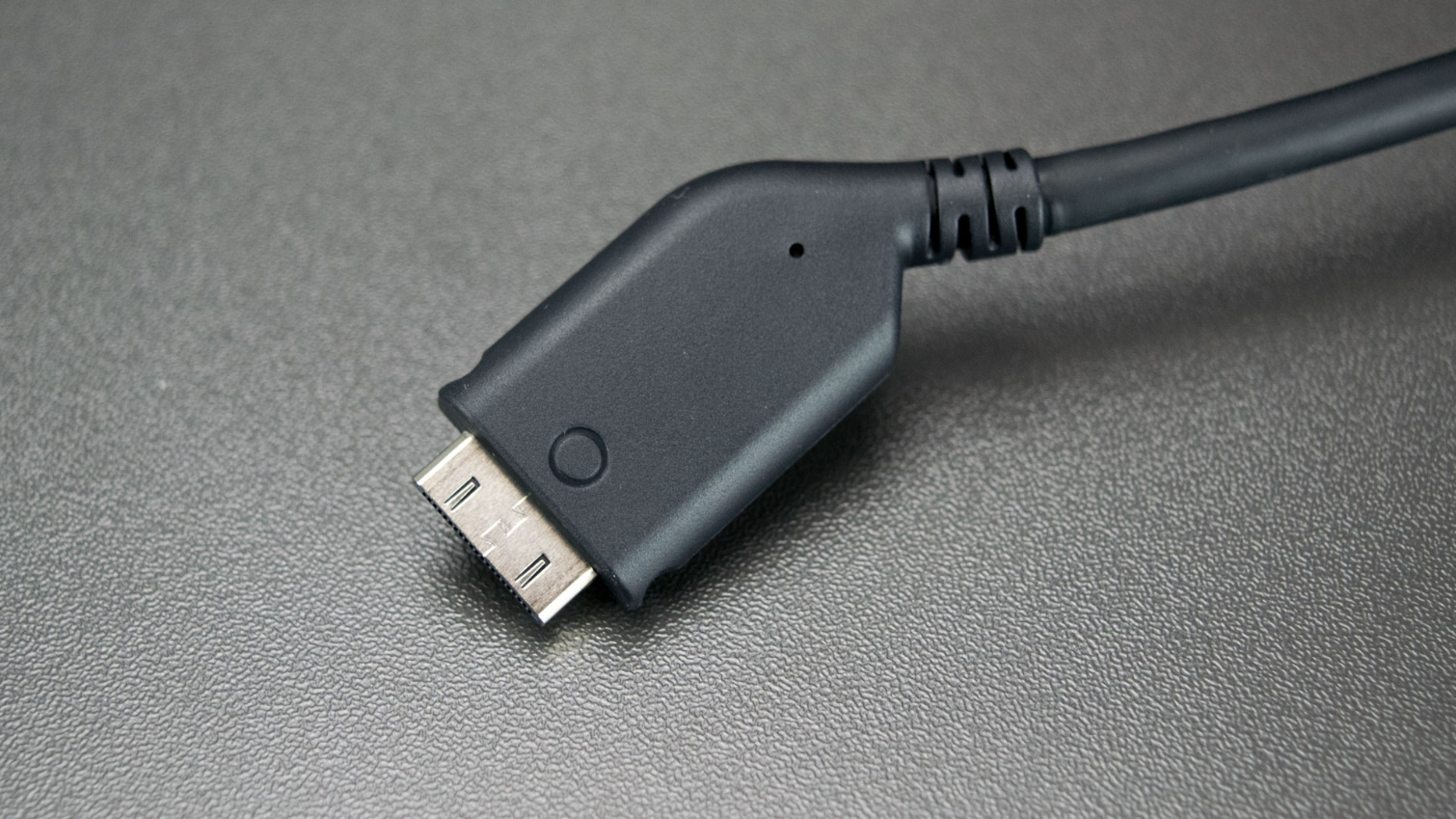
The Vive Pro tether cable features a proprietary plug, which carries the power, video, and USB signals. The plug looks a lot like the one on the Oculus Rift’s cable, but close inspection reveals that HTC's plug is quite a bit larger.
Hidden Serial Number
Upon pulling out the lenses to the maximum distance to reinstall the tether cable, we discovered that HTC hid the serial number for the Vive Pro headset in a somewhat inconvenient location. If you ever need to make a warranty claim, you’ll have to disconnect the cable from your device, because it’s tucked under the cable and the blue cover of the headset. At least it's not likely to wear off from use while hiding behind the cable.
Familiar Setup
Setting up the Vive Pro should be familiar to anyone who buys it, because the process is almost the same as plugging in the Vive that they likely already own. Plug in the power cord, the USB 3.0 cable, and the DisplayPort cable for the Link Box, and then plug the headset into the Link Box. With everything plugged in, press the blue power button to activate the Vive.
Windows should automatically detect the headset and install the drivers. Open SteamVR, and the software will automatically configure itself for the Vive Pro. SteamVR will prompt you to install a new Bluetooth driver, which you must do to enable communication with your existing Vive controllers. If you switch back to the old Vive, SteamVR will reinstall the old driver automatically. In our setup, the new headset assumed the room-scale setup from the existing Vive.
If you’re running a desktop PC, you probably won’t run into a problem setting up the Vive Pro, but laptop users might have a problem. VR-Ready laptops always have HDMI ports, but not all of them offer DisplayPort. As with many aspects of cutting-edge tech, you may need an adapter.
Current page: Up Close With the HTC Vive Pro Headset
Prev Page HTC's Vive Pro Tackles Premium VR Next Page More Than a Resolution UpgradeKevin Carbotte is a contributing writer for Tom's Hardware who primarily covers VR and AR hardware. He has been writing for us for more than four years.
-
ingtar33 well glad the screen door effect is discussed, somehow that's left out of many of these VR display discussions, as anyone who's actually used one for 5 minutes will tell you it's the biggest problem you'll face in VR for the most part.Reply
Good news on the design improvements and resolution improvement. Shame that god rays are still an issue. Seems like we're still a generation or two on this tech before it becomes something viable for the mainstream. -
jfkeenan There are several VR solutions available at a variety of price points. I wish people would stop complaining that HTC is offering a premium product. When I learned the news of the pre-order I was like, "Shut up and take my money!" I just got my tax return so this was a no brainer for me. Like Kevin said, if you can't afford a Mercedes don't be mad at them for making luxury cars.Reply -
kcarbotte Reply20852498 said:well glad the screen door effect is discussed, somehow that's left out of many of these VR display discussions, as anyone who's actually used one for 5 minutes will tell you it's the biggest problem you'll face in VR for the most part.
Good news on the design improvements and resolution improvement. Shame that god rays are still an issue. Seems like we're still a generation or two on this tech before it becomes something viable for the mainstream.
It's really not a big problem unless you're trying to do things that require reading text.
As someone who's put hundreds of hours in with the Vive, I can honestly say that screen door effect is not a real problem. It's just something that people like to complain about to give them justification not to adopt VR.
I won't deny that it exists. But I don't buy for a second that it's a real hindrance.
That said, if that's the biggest problem that you perceive, then VR is doing pretty good, I'd say. -
FreyjasChosen I'm with you, JFKEENAN. I pre-ordered the day it was available. I even bought the original HTC Vive because I needed the base stations and controllers (before the bundle was announced).Reply
I see a lot of complaints about the price tag of the Vive Pro, but no one's forcing anyone to buy it. I'm happy to pay for the best available product on the market. -
Giroro If HTC wants to charge a premium, then the device has to BE premium. There is a definite difference between "legitimately expensive" and "overpriced".Reply
At the end of the day, the Vive pro is still a tethered plastic headset that uses an inferior Samsung pentile display (forcing your system to waste 30% of its resources rendering subpixels that don't actually exists). Is the design a little better thought-out? sure.. that's how product iteration works. You change the design over time to improve quality and to decrease cost. What has HTC actually done here to justify the fact that they've more than doubled their asking price?
At the end of the day, nobody is going to pay "Lamborghini" prices for a Nissan Leaf E; not even one with particularly nice paint comfortable seats.
Of course, that's not a perfect analogy, because a used Nissan leaf is probably less expensive than a Vive Pro if you add in a computer powerful enough to deliver 90fps to such an impractical display. -
uglyduckling81 Kcarbotte can I ask which titles you have put the most time into?Reply
I've had a vive since launch but have used it less than 30 hours. I haven't found a game to put a lot of hours into. -
rhysiam The issue with your luxury car analogy is that in the case of VR, the product needs a vibrant software market to really succeed long term. When you buy a luxury car you're able to use a well-established road system that's developed over many years. That's not the case with VR. We have a classic chicken-and-egg situation where software developers are understandably nervous about investing heavily in VR experiences because the price of entry for VR results in a tiny potential market for their VR game/experience, while on the flip side, sales of headsets are being impacted by the limited games and experiences on offer. Lower headset sales means poorer economies of scale and higher per-headset prices to recoup the huge R&D investments, which just exacerbates the issue.Reply
Those of us (myself included) who really want VR to thrive long term do IMHO have some cause for concern with products like the Vive Pro that reinforce the fringe nature of VR and don't do a lot to entice the all-important software developers into the ecosystem.
Another threat to VR, and perhaps a bigger threat at that, is race-to-the-bottom headsets which compromise the experience. I know several people who have tried cheap, flawed VR experiences and written off VR as a whole. At least Vive is clearly marketing - and making strides to provide - a genuinely good VR experience.
I'm genuinely hoping for the day when I can pop on a wireless headset with 4K (or more) per eye and well-implemented foveated rendering and explore foreign worlds with interesting characters and complex stories. That's a platform that I would be more than willing to pay a lot of money to get access to. But getting there will require significant investment both on the hardware and software side. The Vive Pro headset is absolutely a step in the right direction from a technical hardware perspective, but is an (effectively) $1100 product right for the VR industry as a whole in the long term? I'm not so sure. -
uglyduckling81 I would say yes.Reply
Like you said a bad VR experience is horrendous and immediately turns you away.
When I got the Vive I only had a GTX 970 and it made me very sick every time I tried to use it. I was on the verge of selling it and putting VR into the non compatible with me section.
I took a different approach and upgraded to a GTX 1080 and haven't gotten sick since.
Turns out my hopeless travel sickness body is extremely susceptible to any frame time issues and the extra GPU horsepower did the trick. -
Ionlydothis The problem isn't that about offering a premium product. It's just that the Vive Pro IS NOT premium. It's exploitative. Minor improvements for a huge mark up but still the same critical flaws? Yeah, no thanks!Reply -
svx94 You can position yourself like Rolex or Mercedes of luxury market, they are built for "EXCLUSIVENESS"... that magic word won't do you any good in gaming market.Reply
